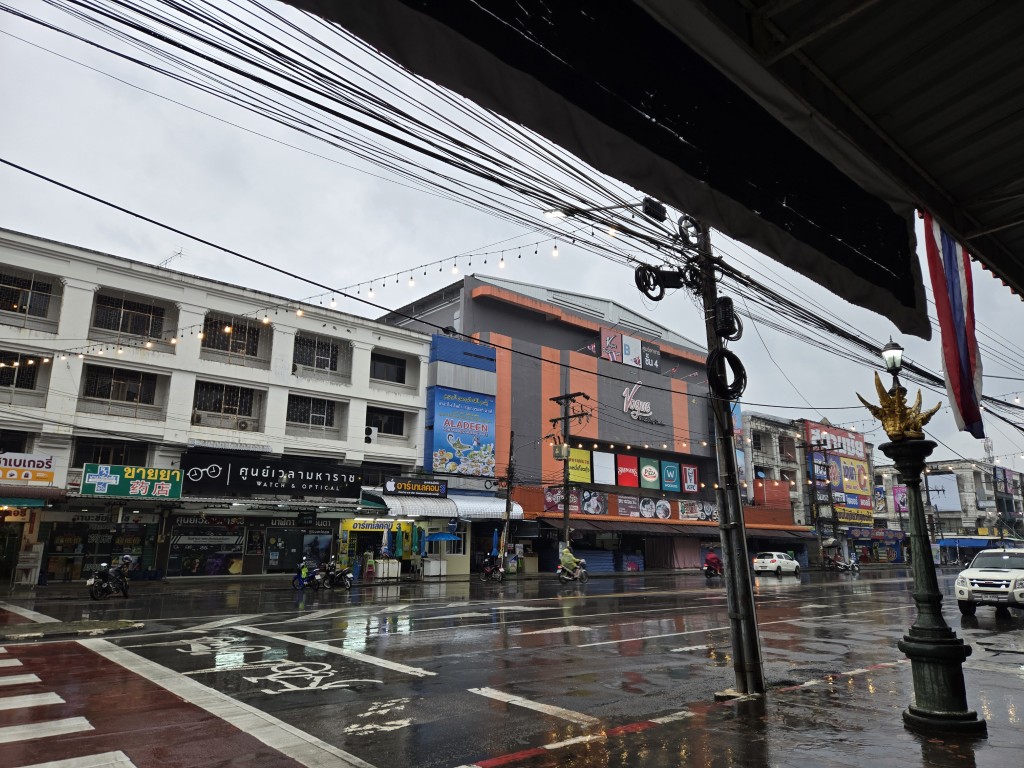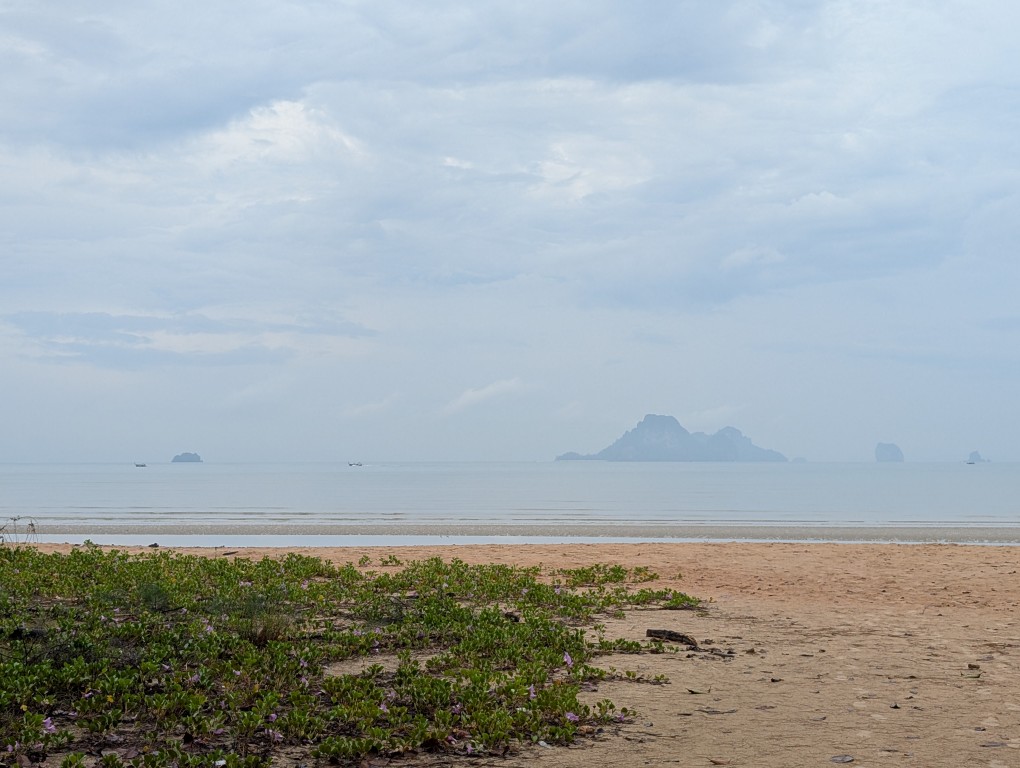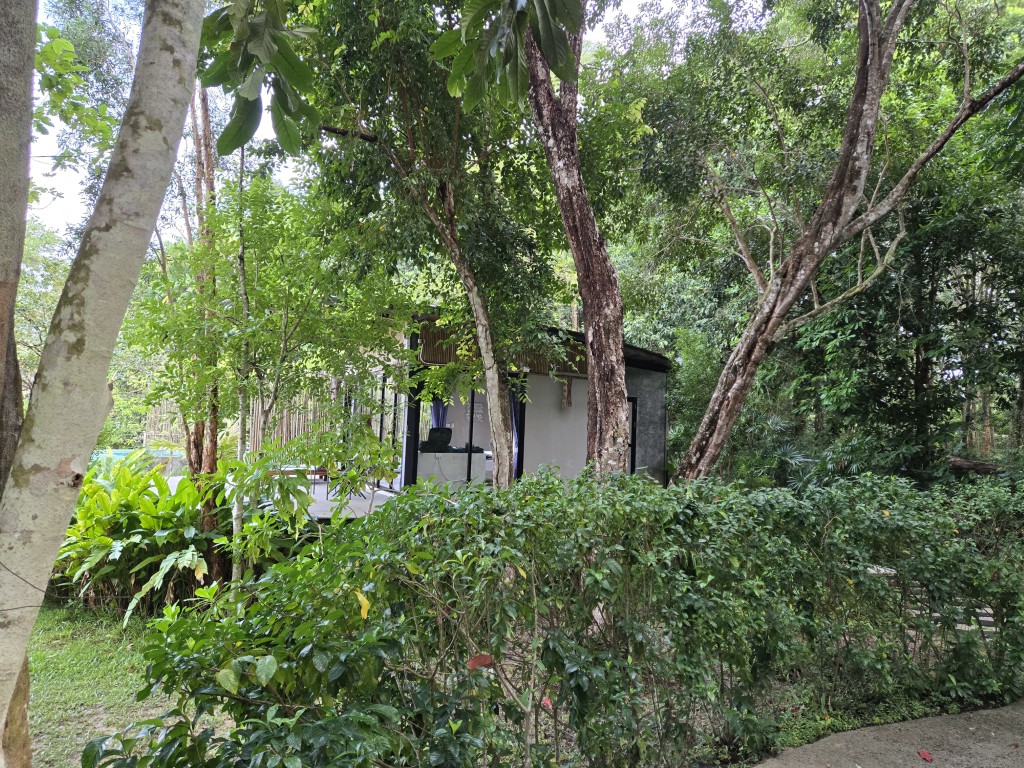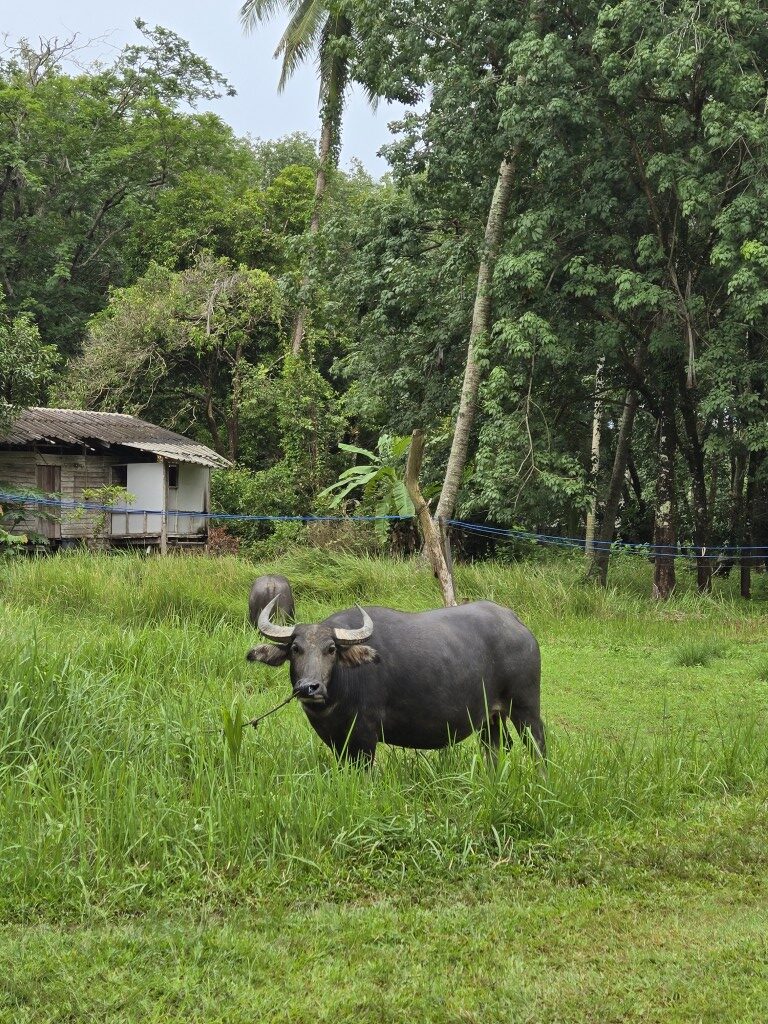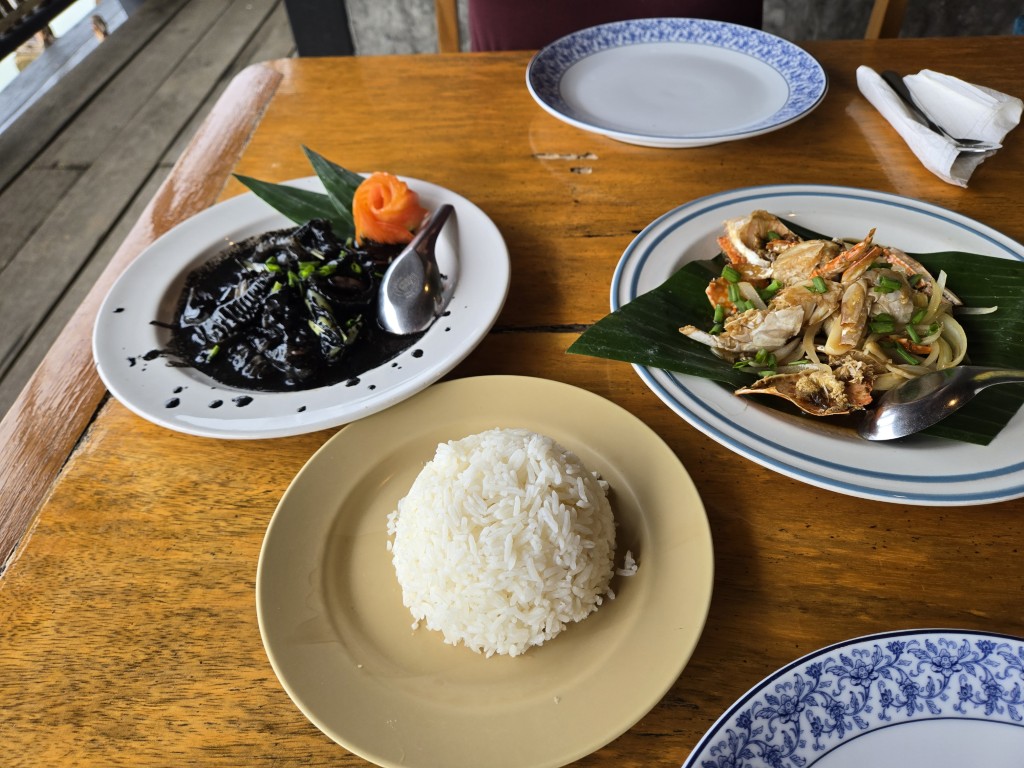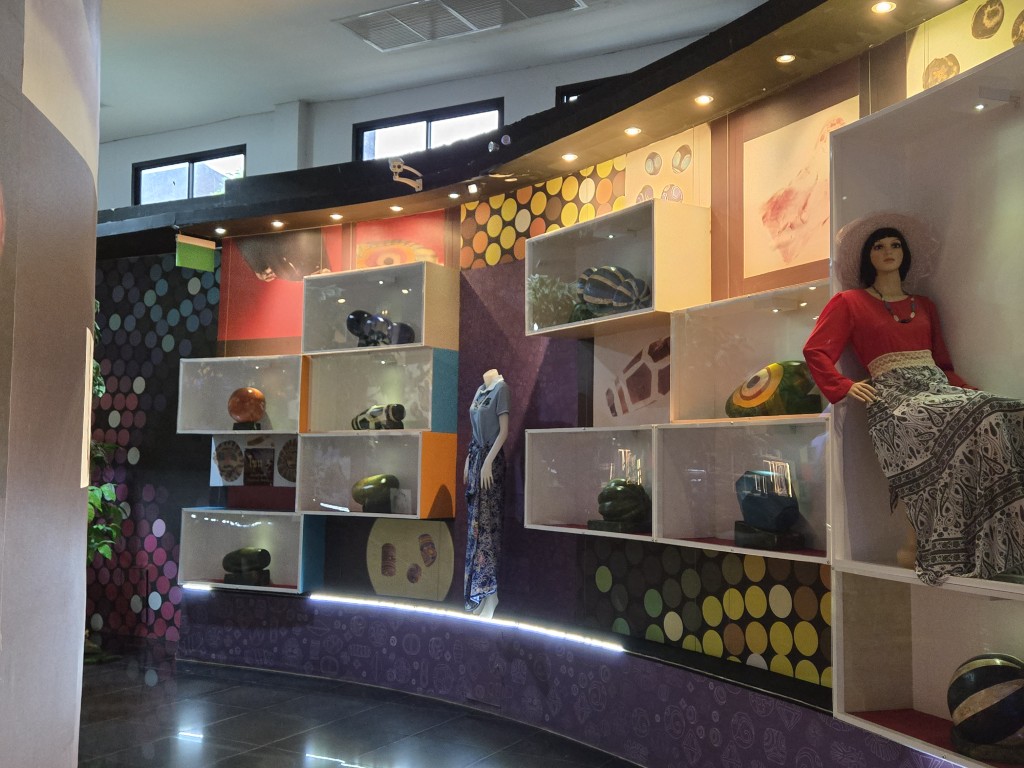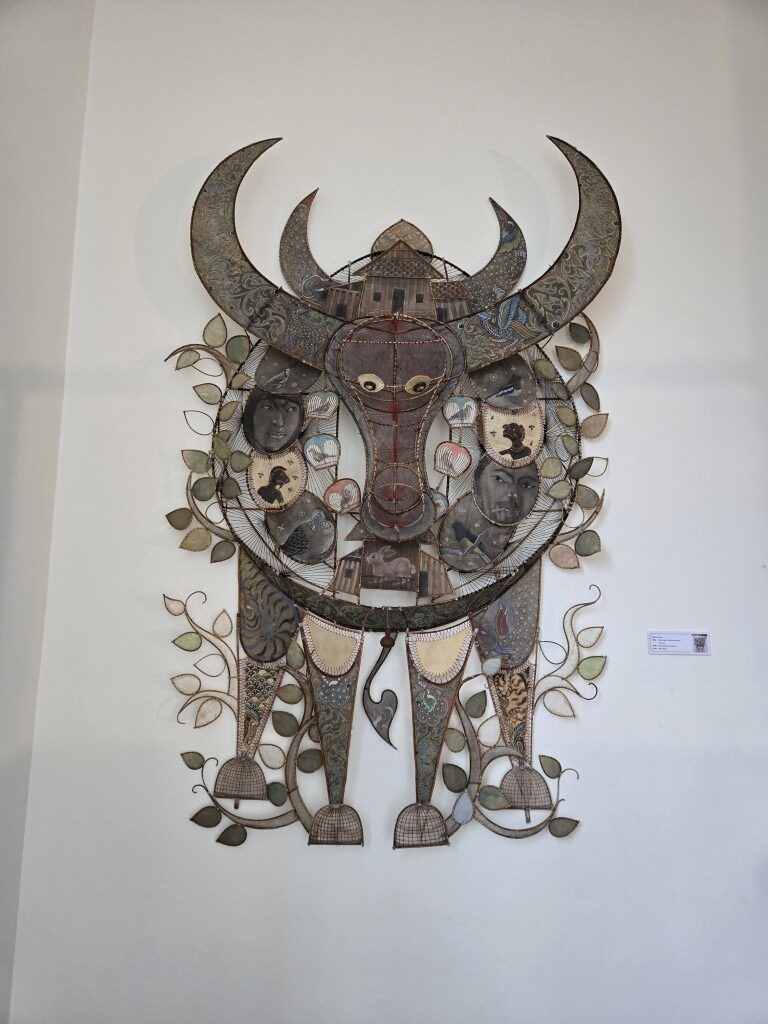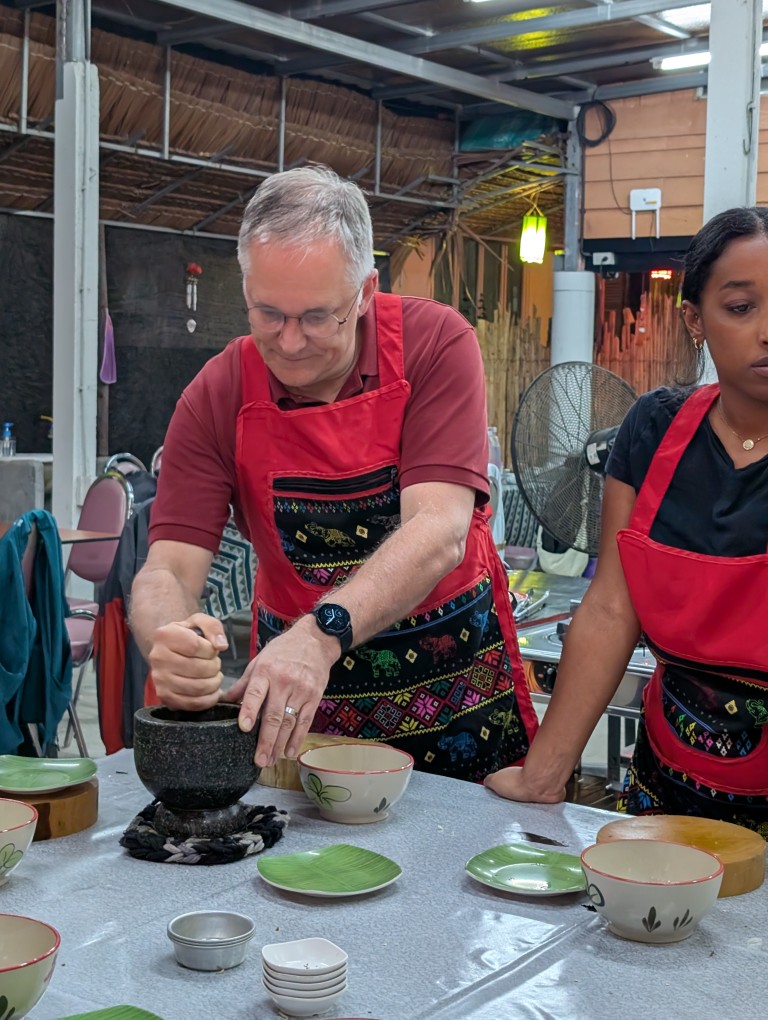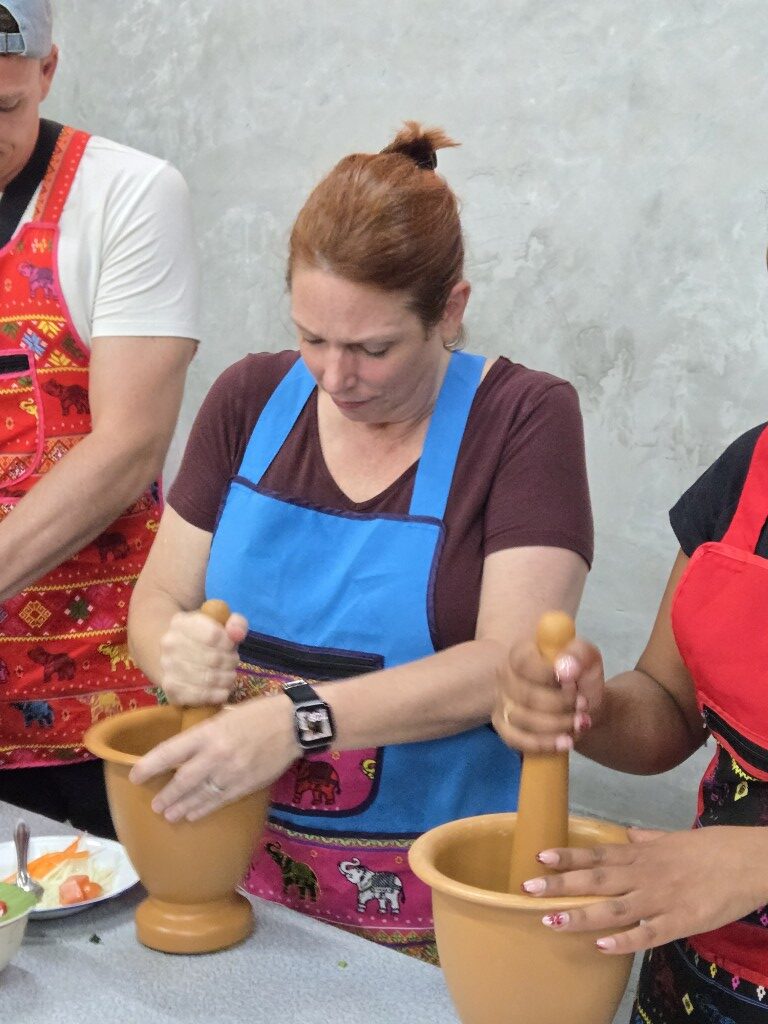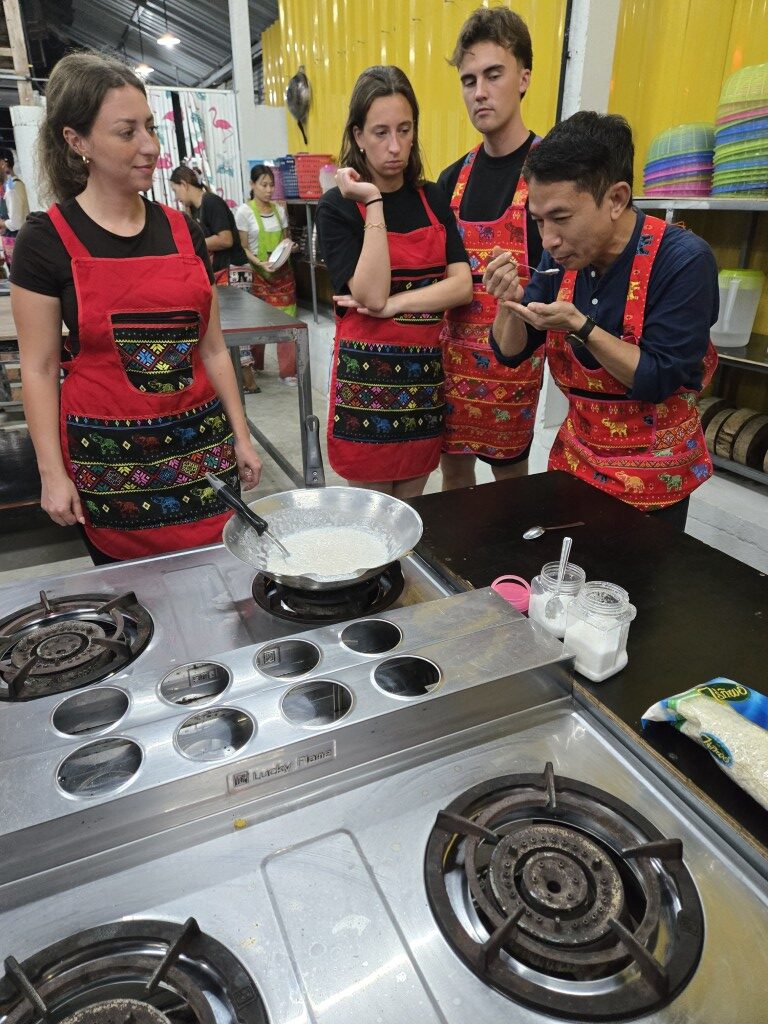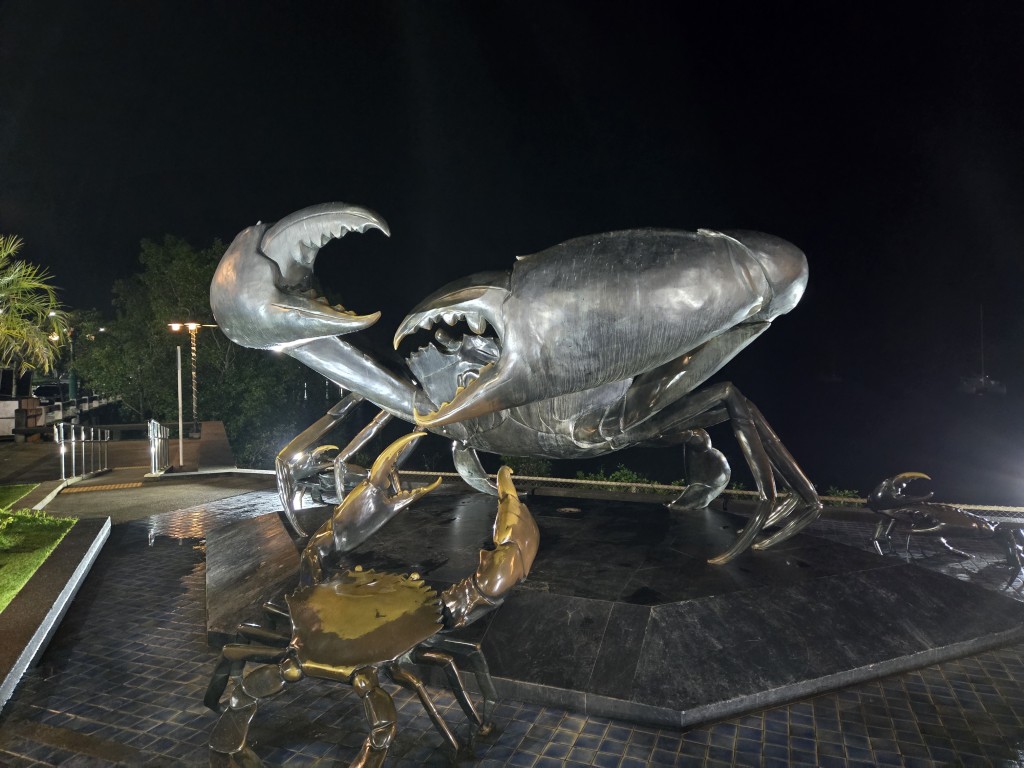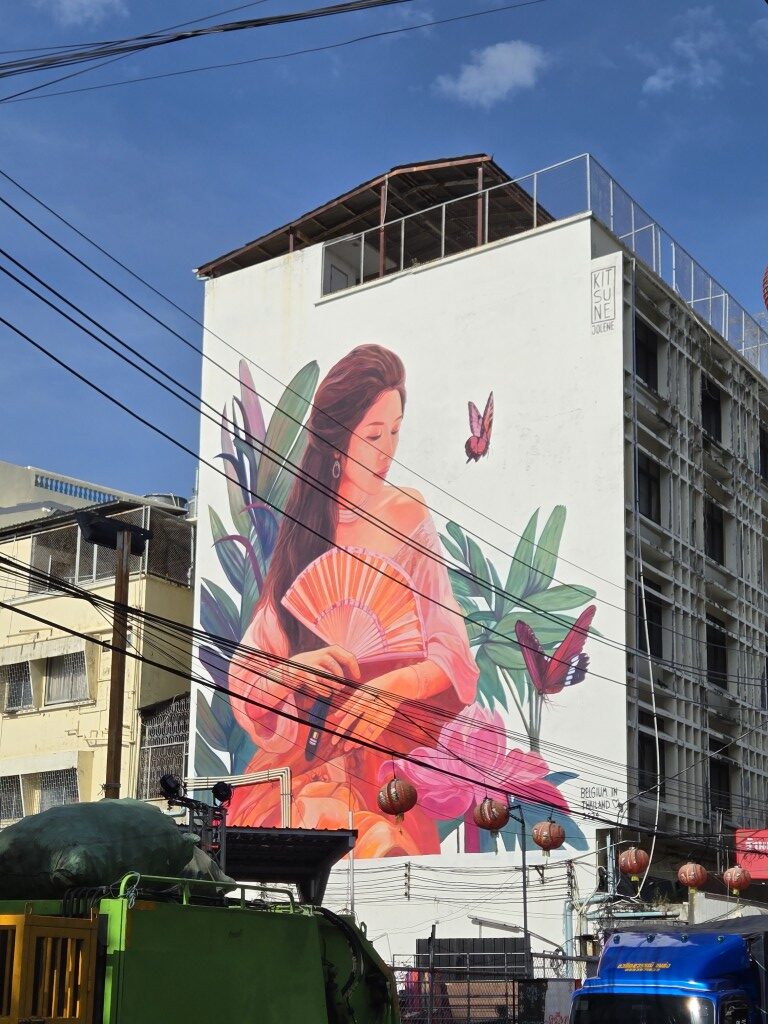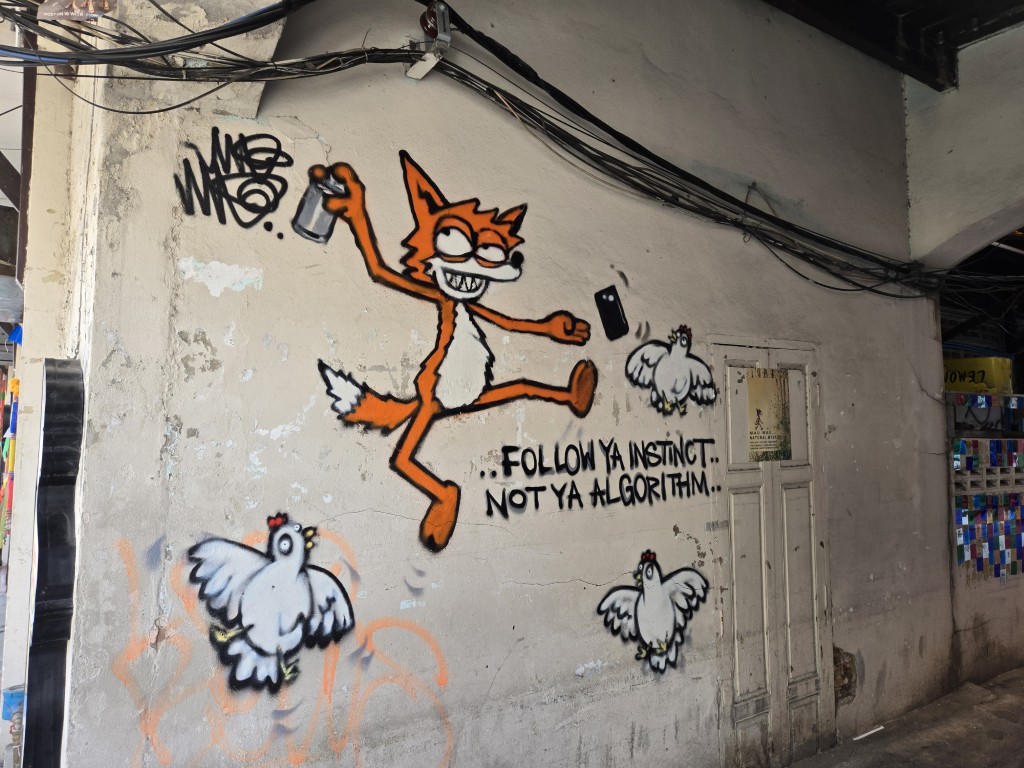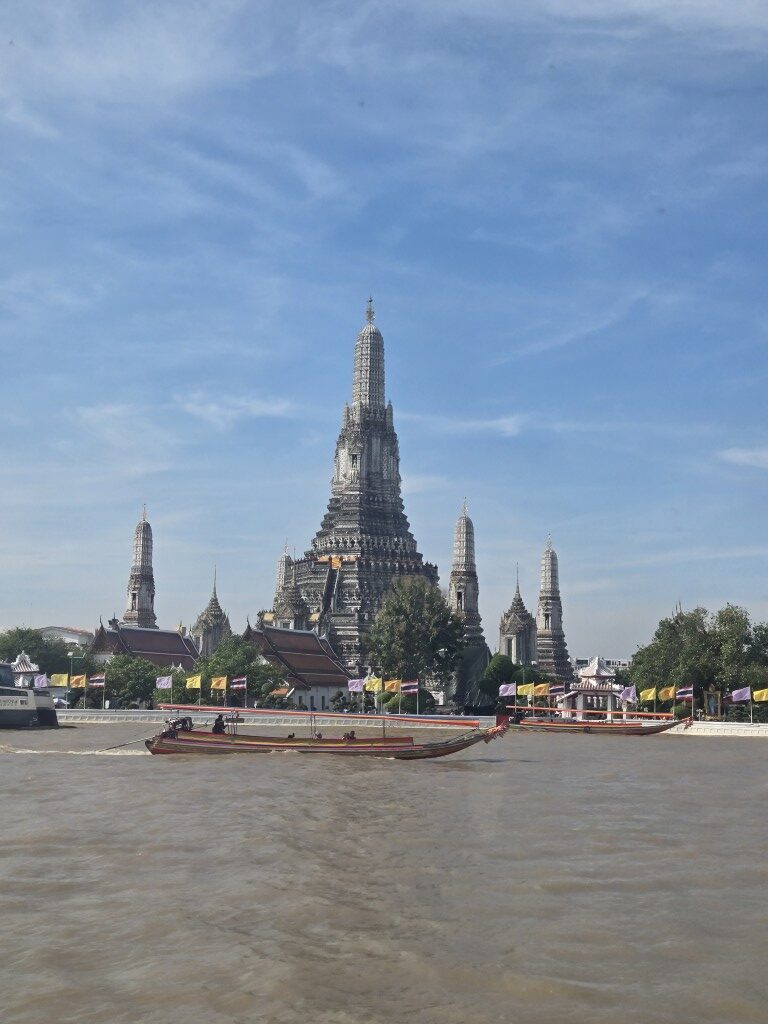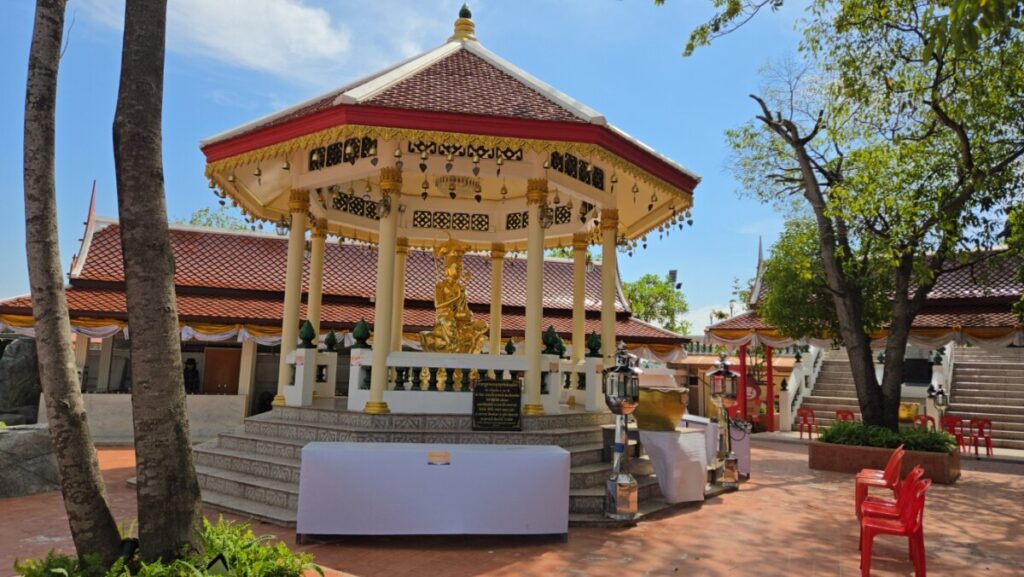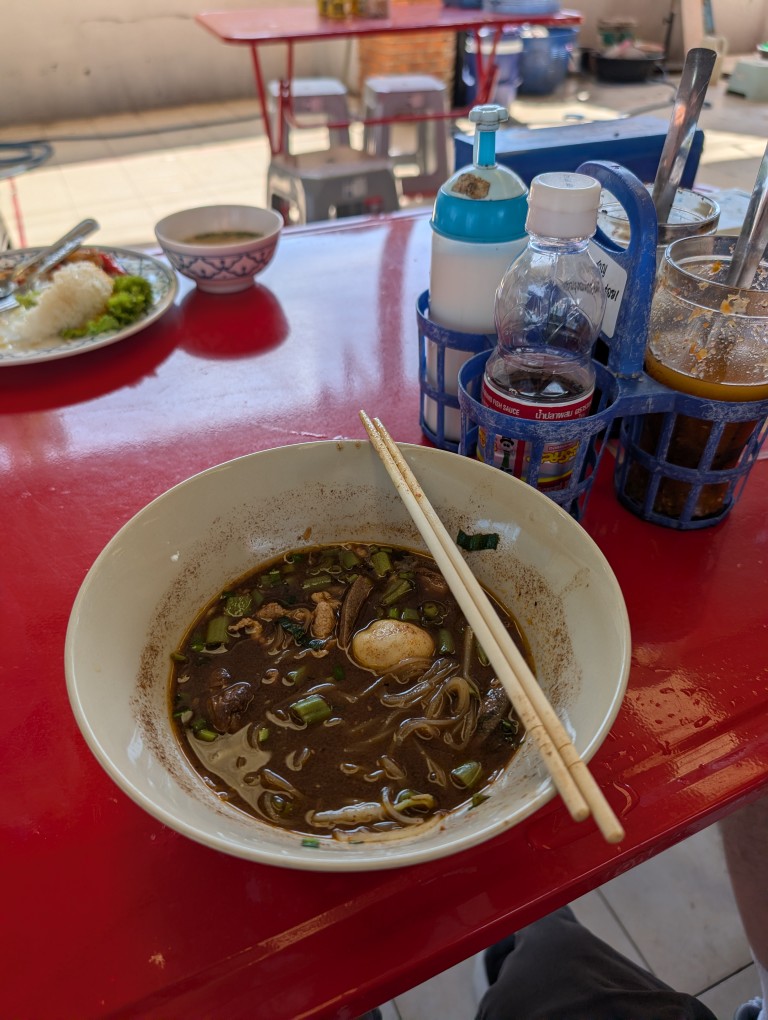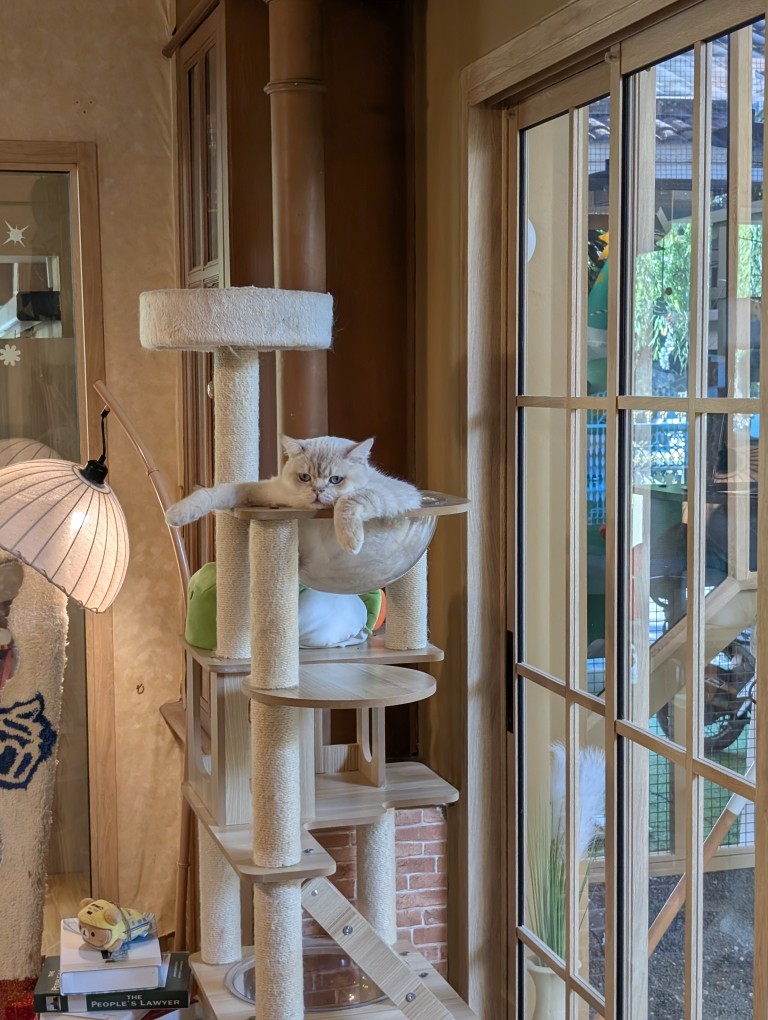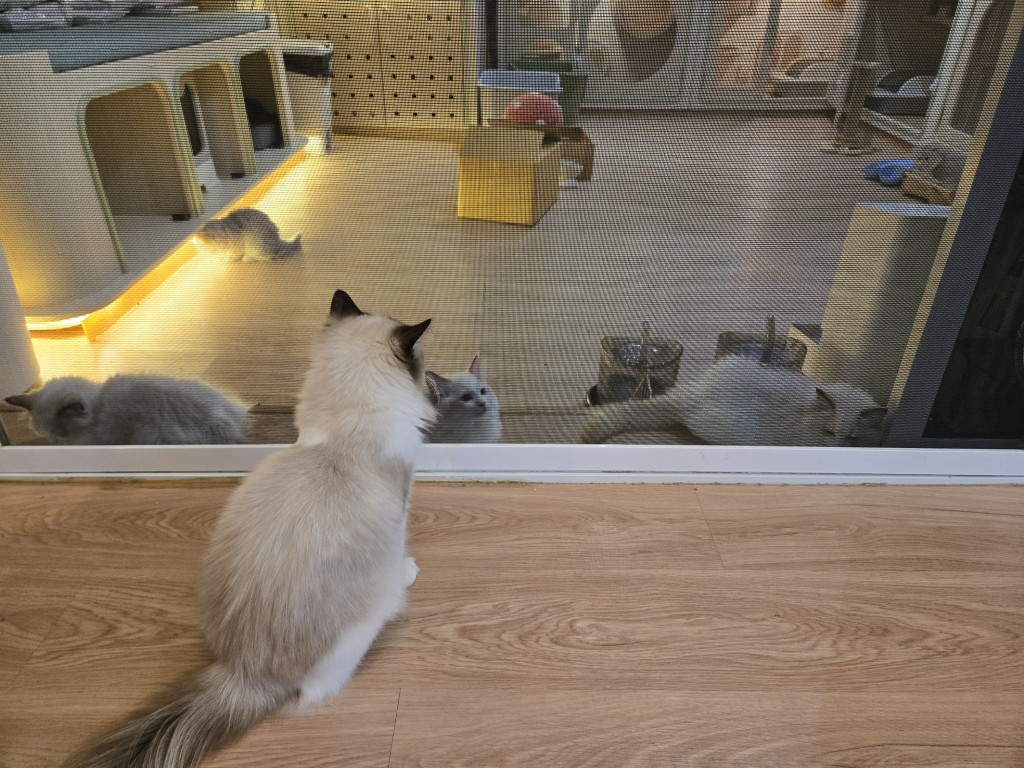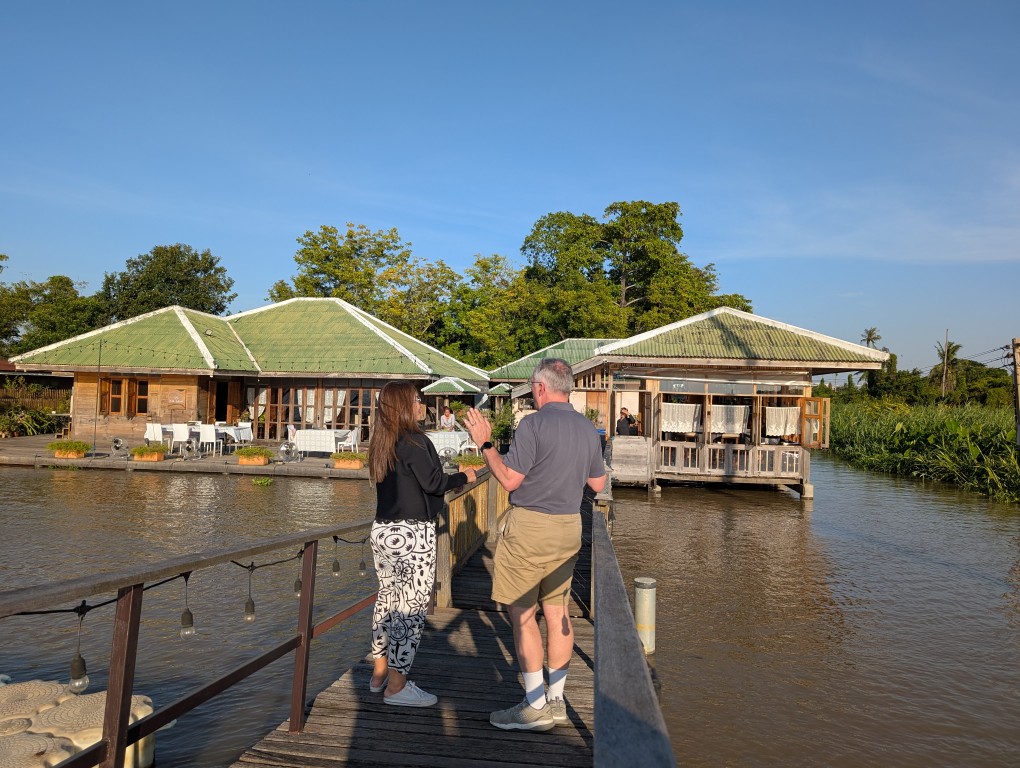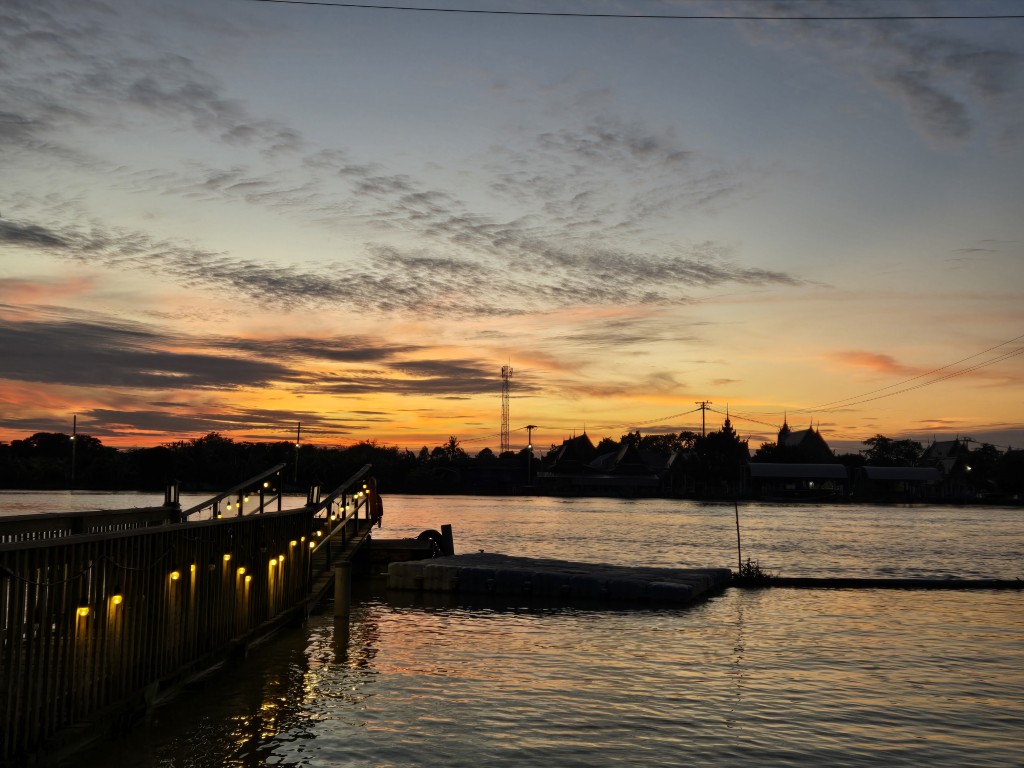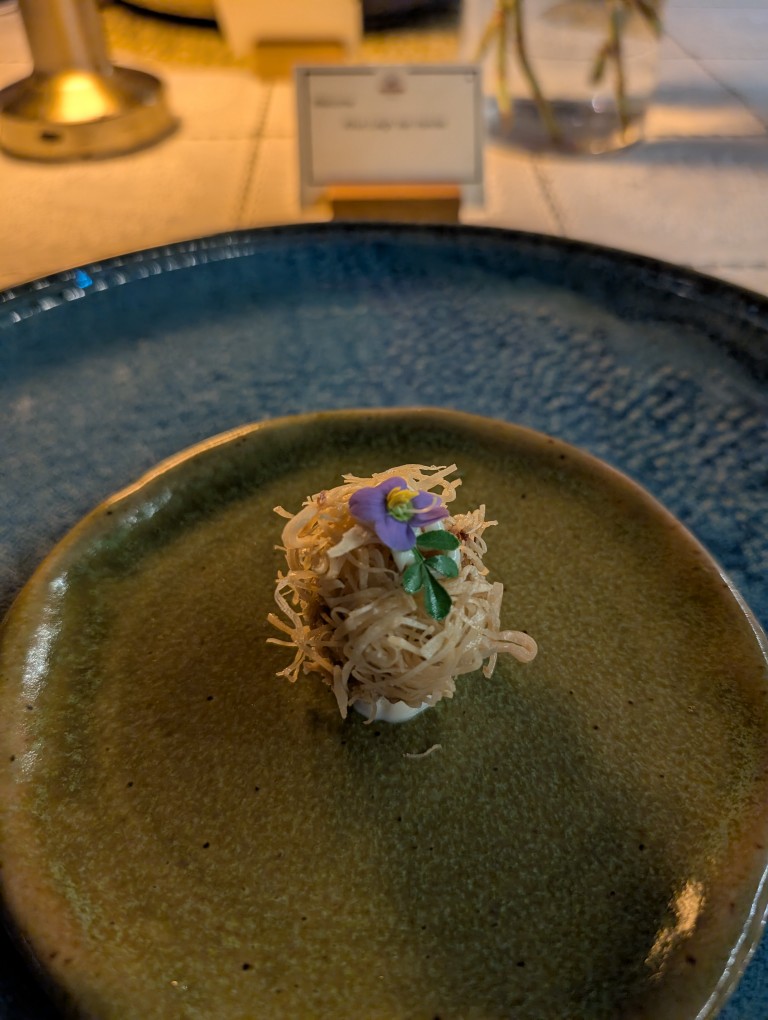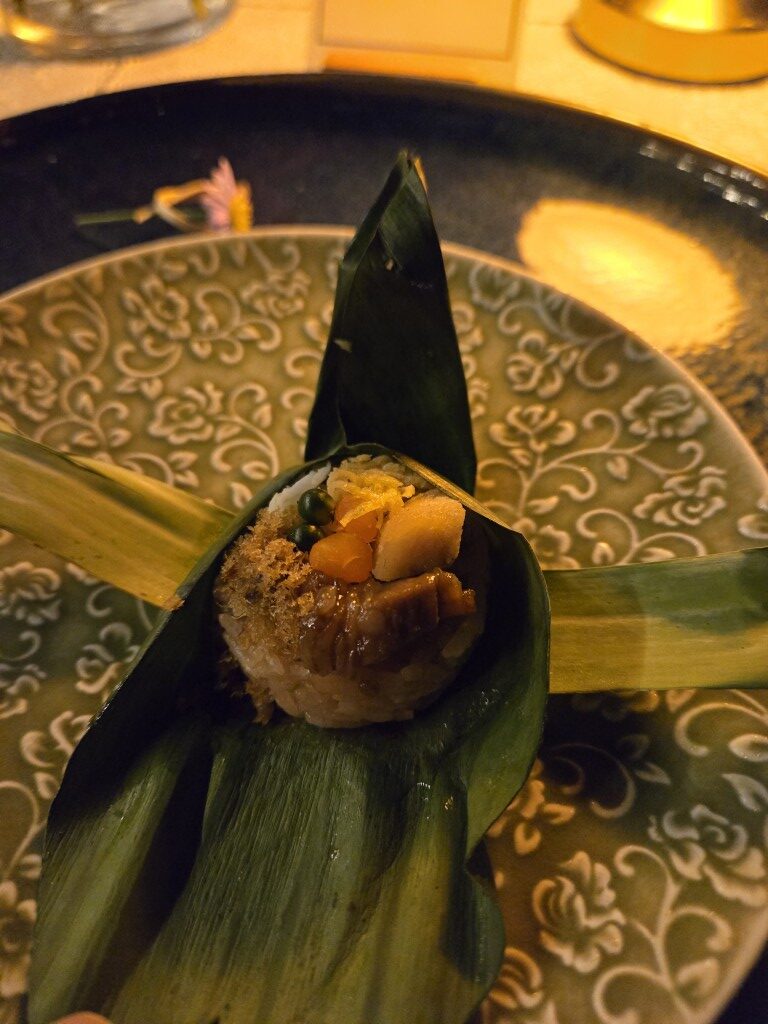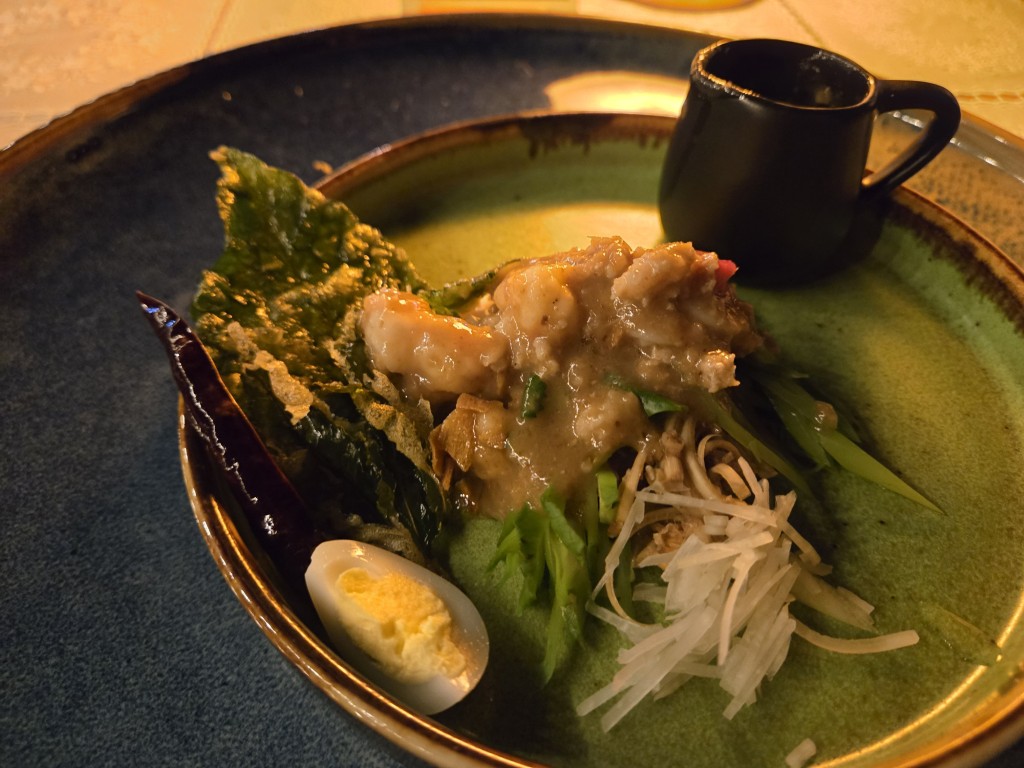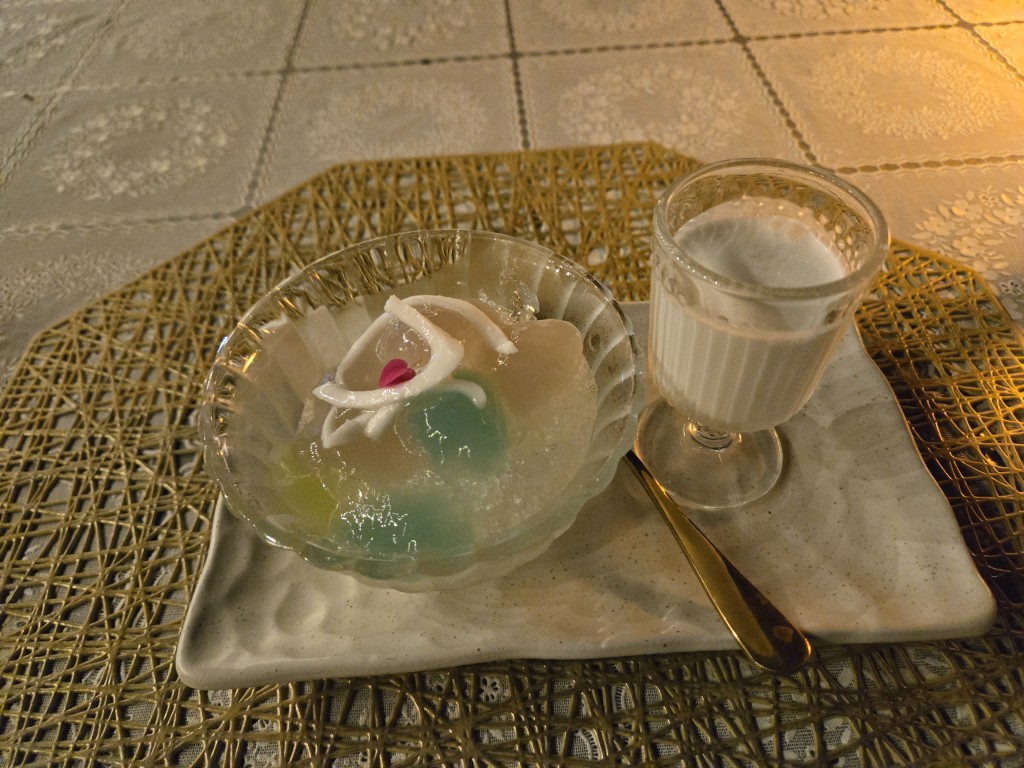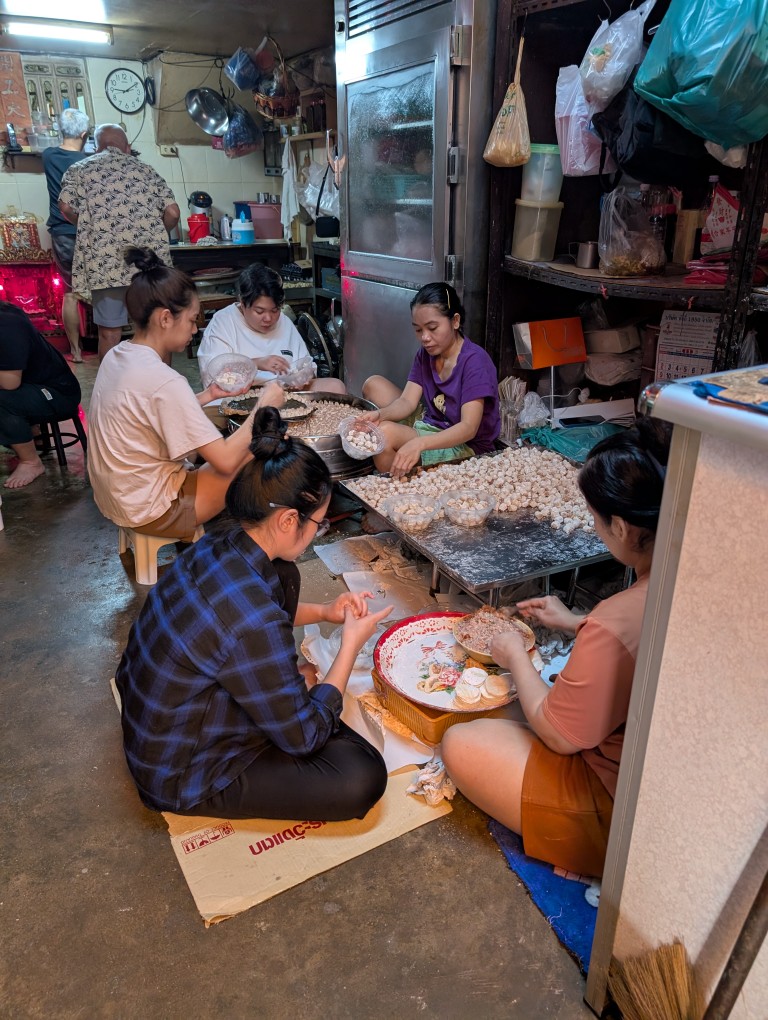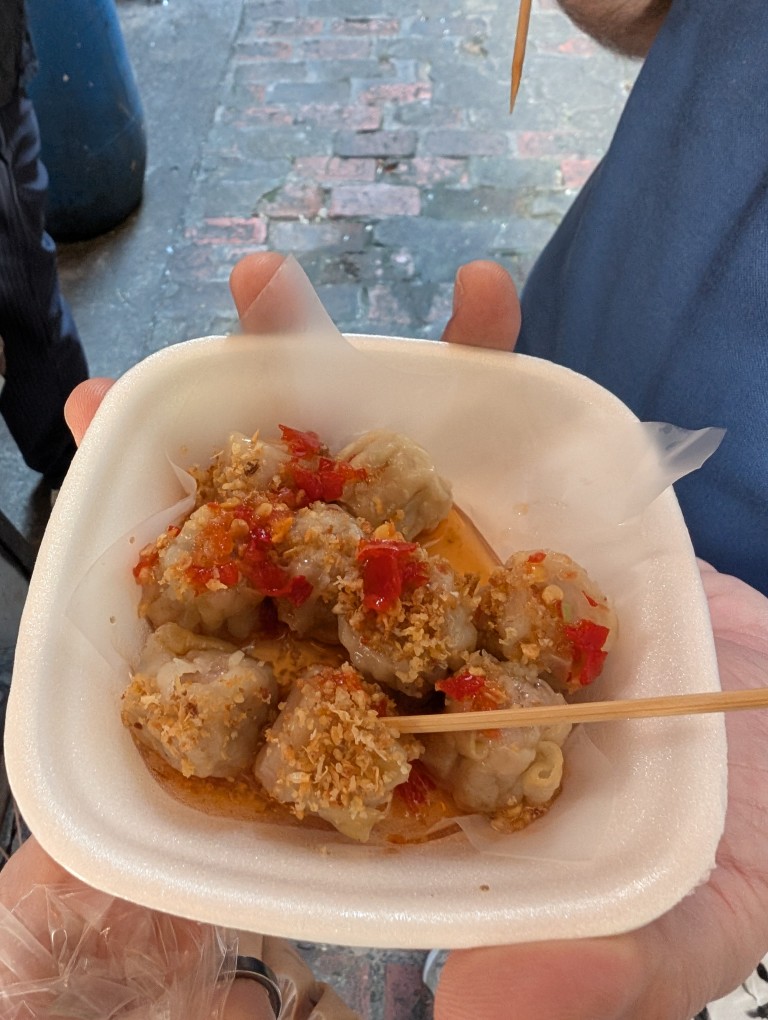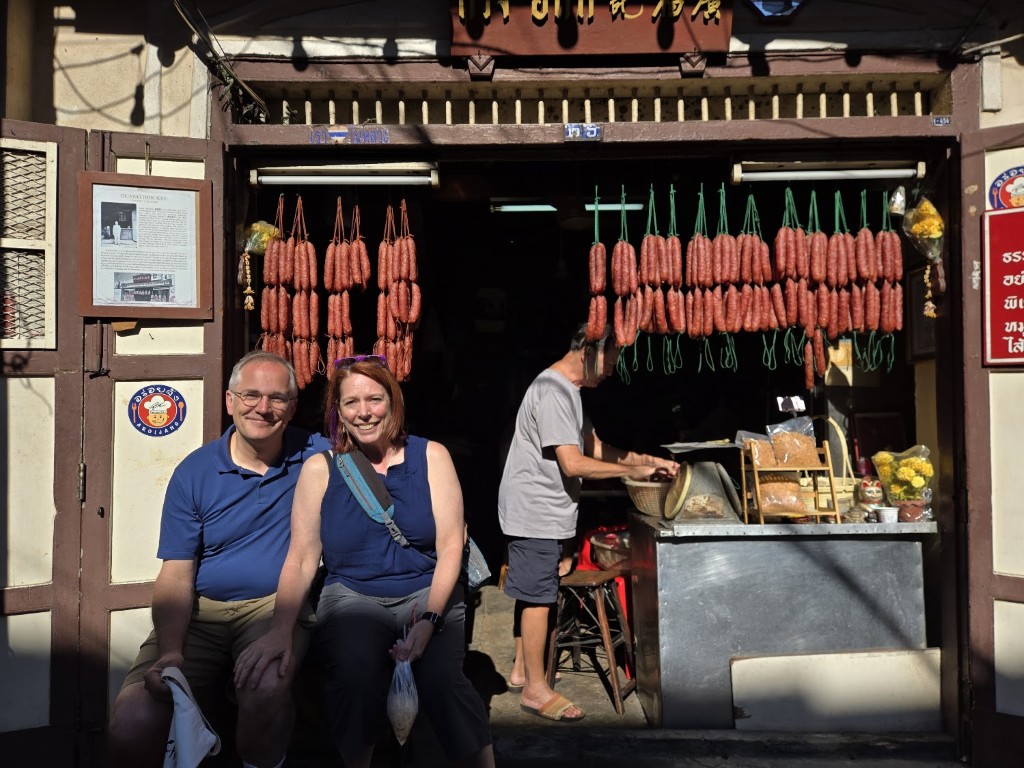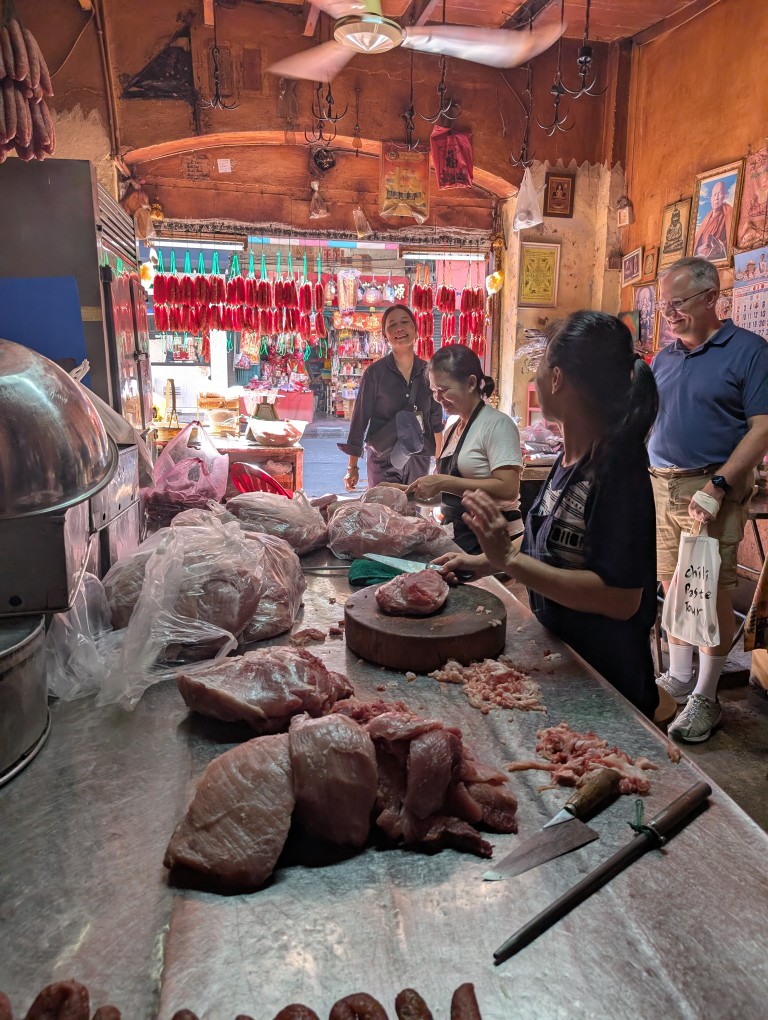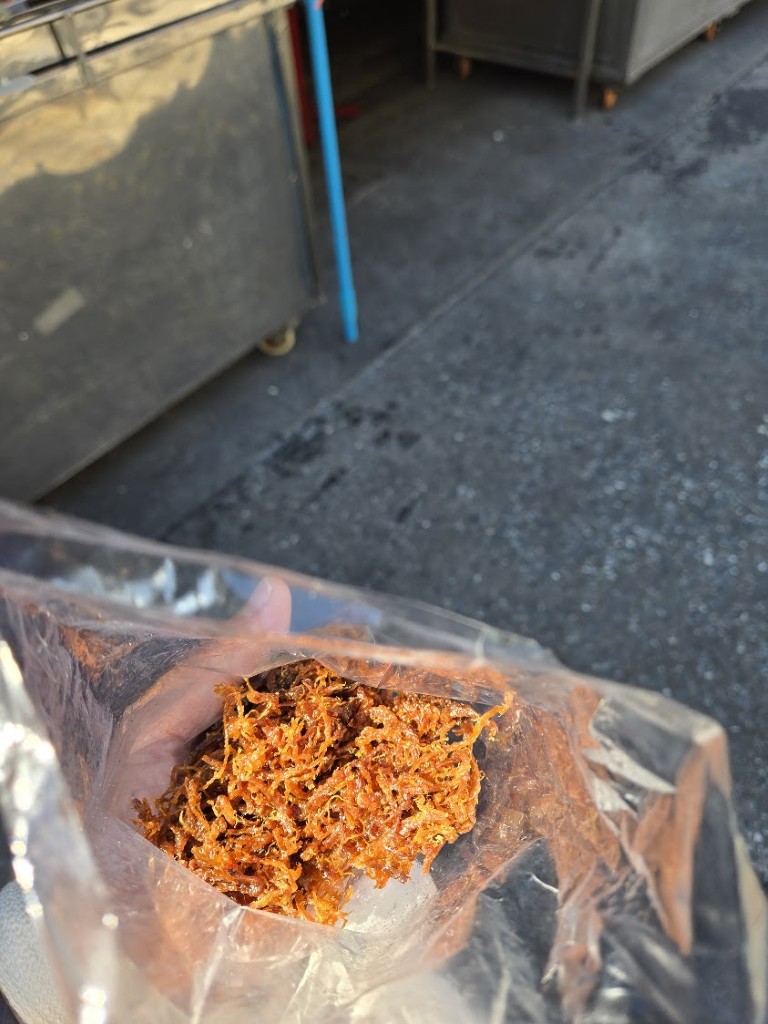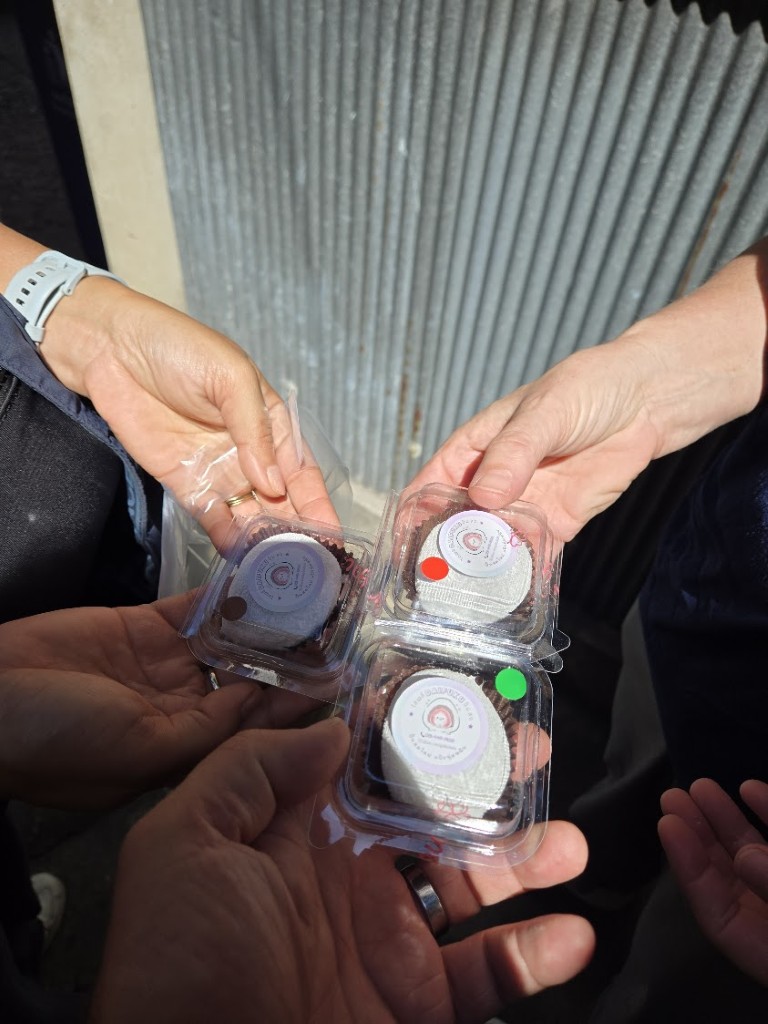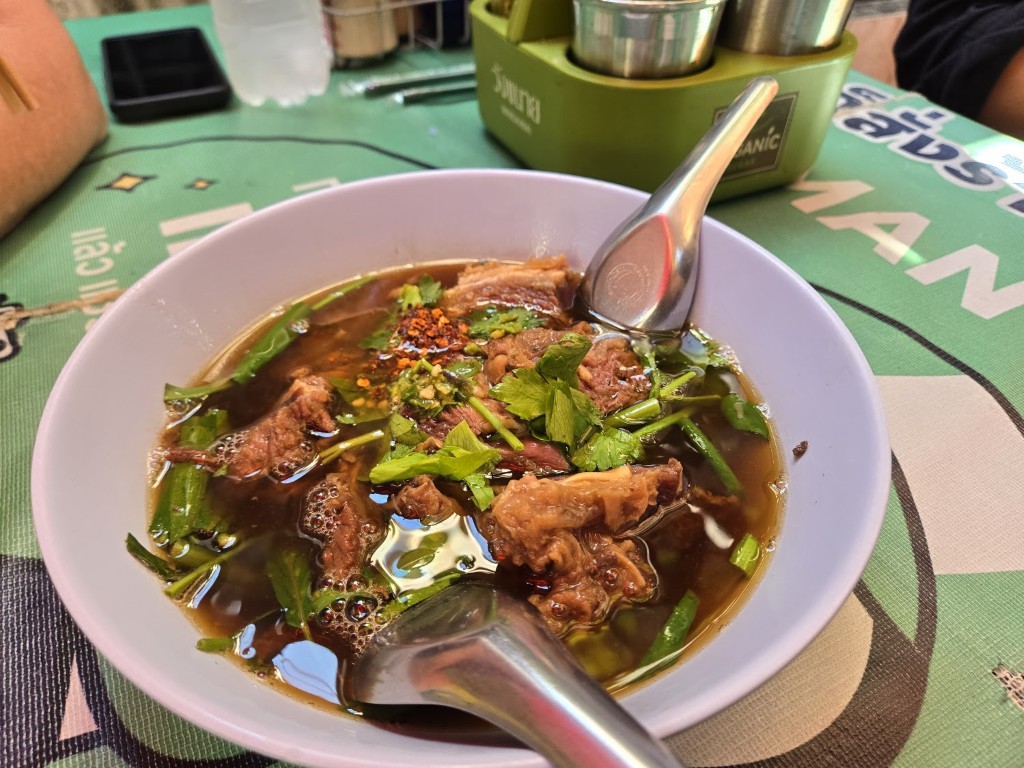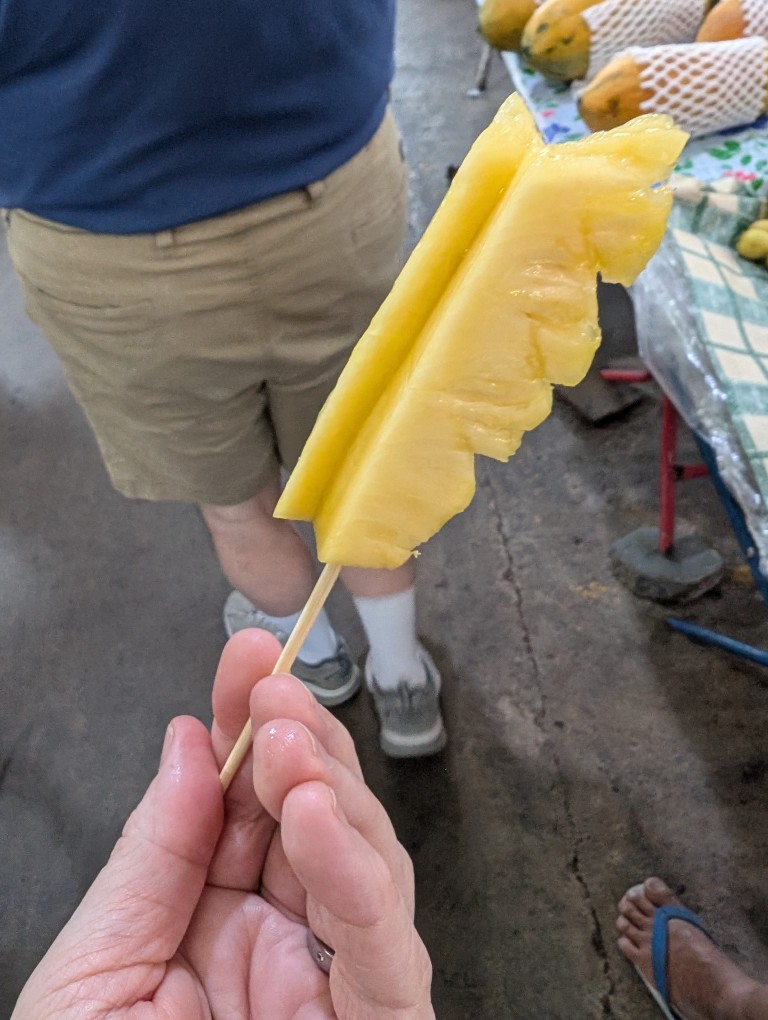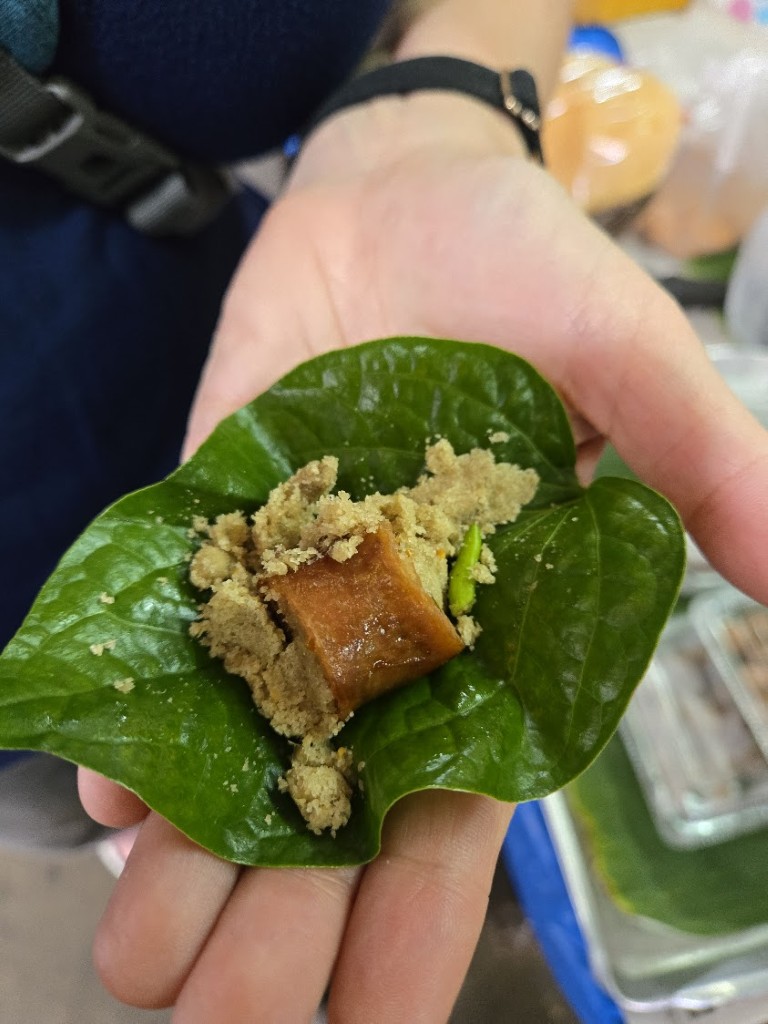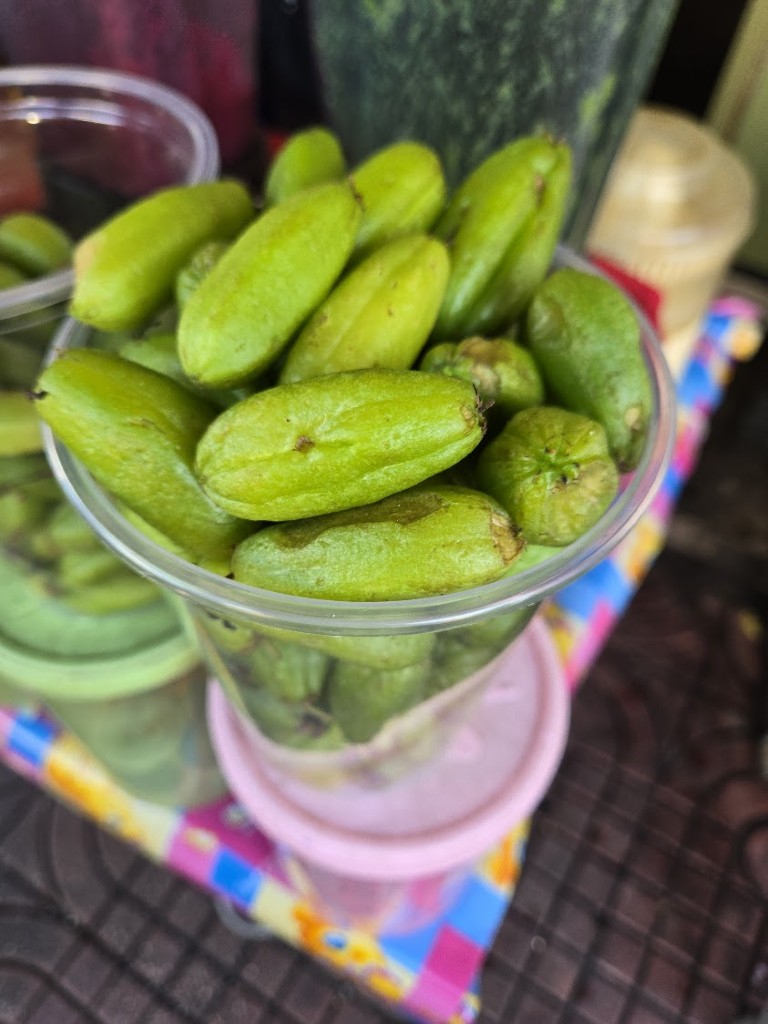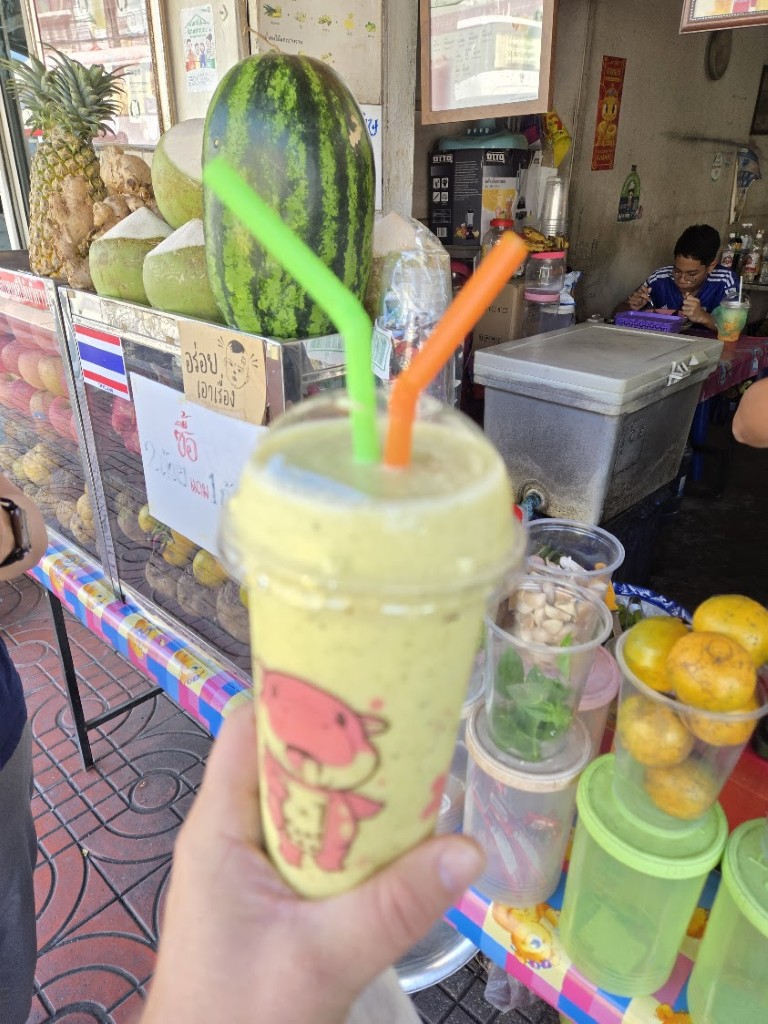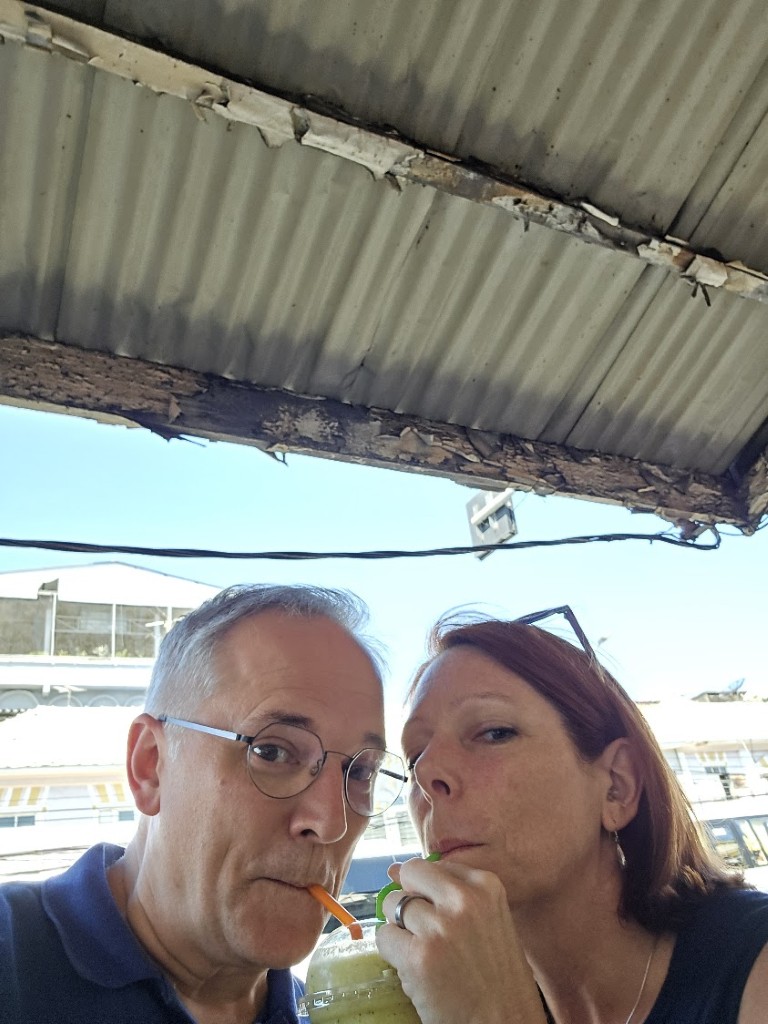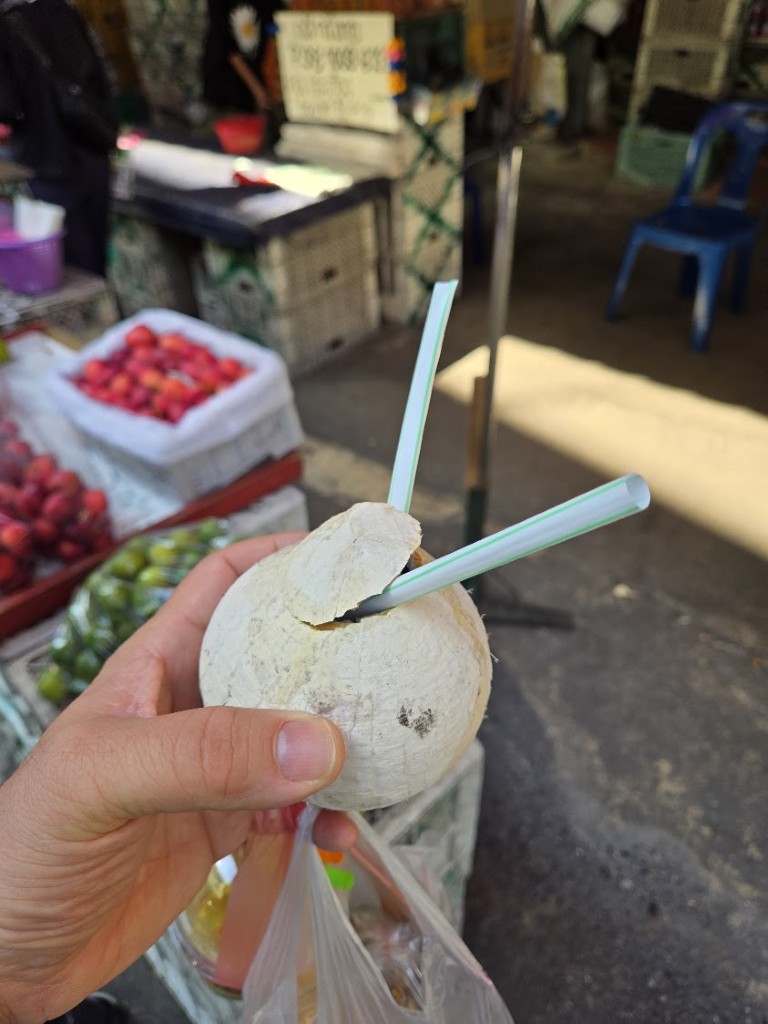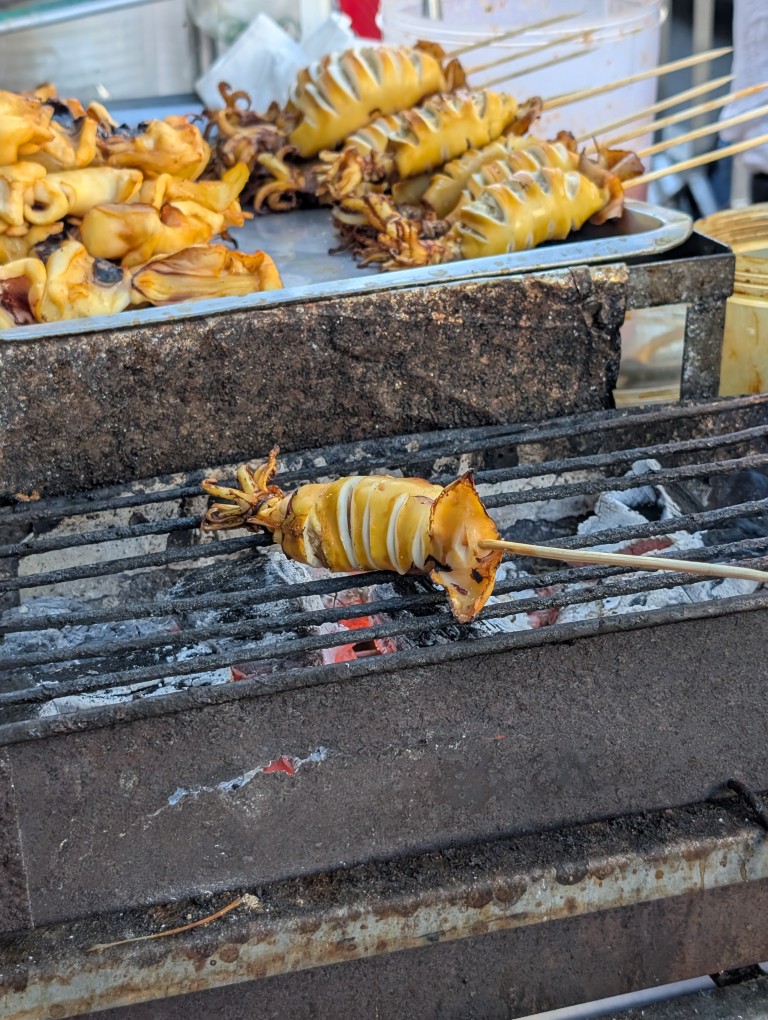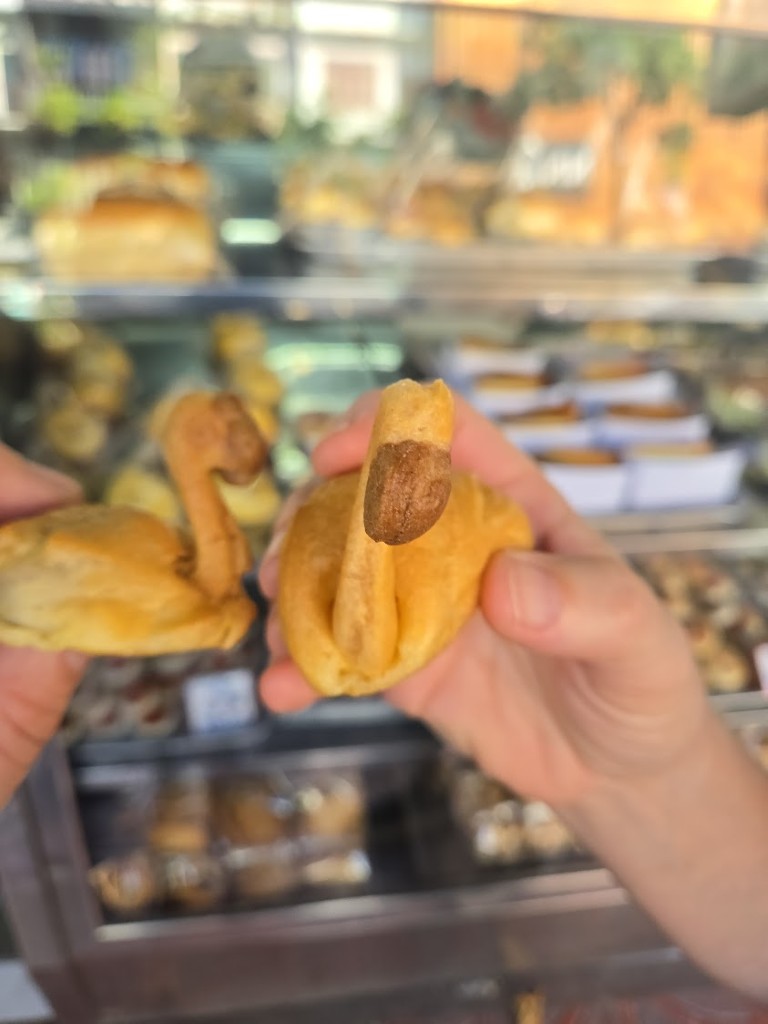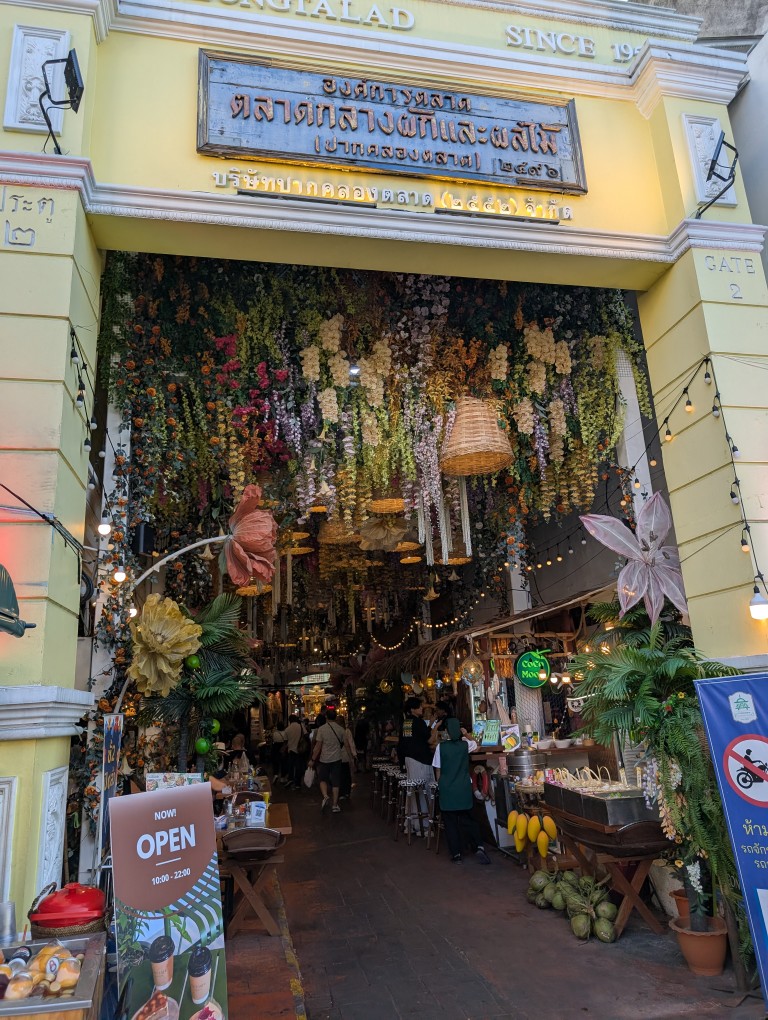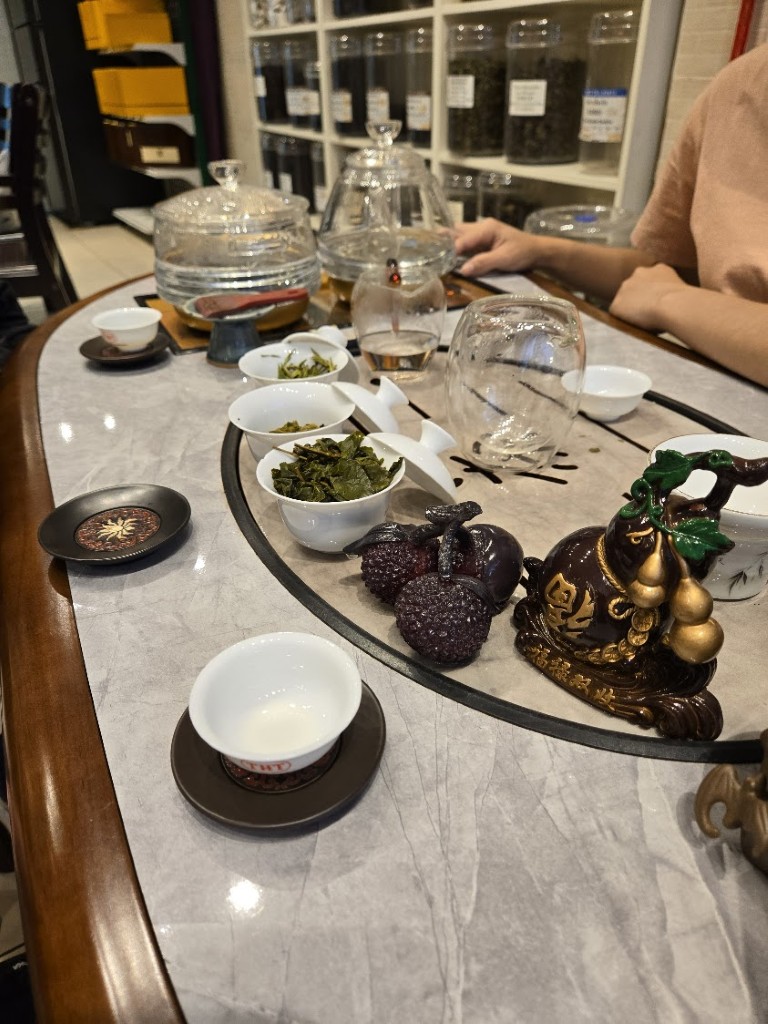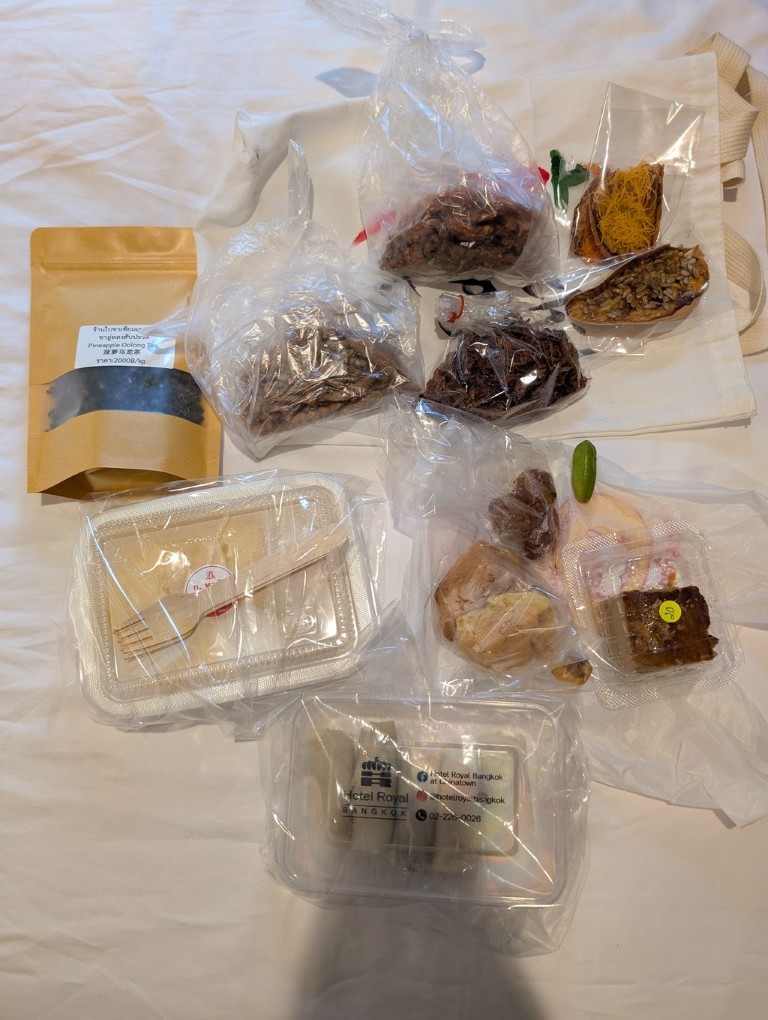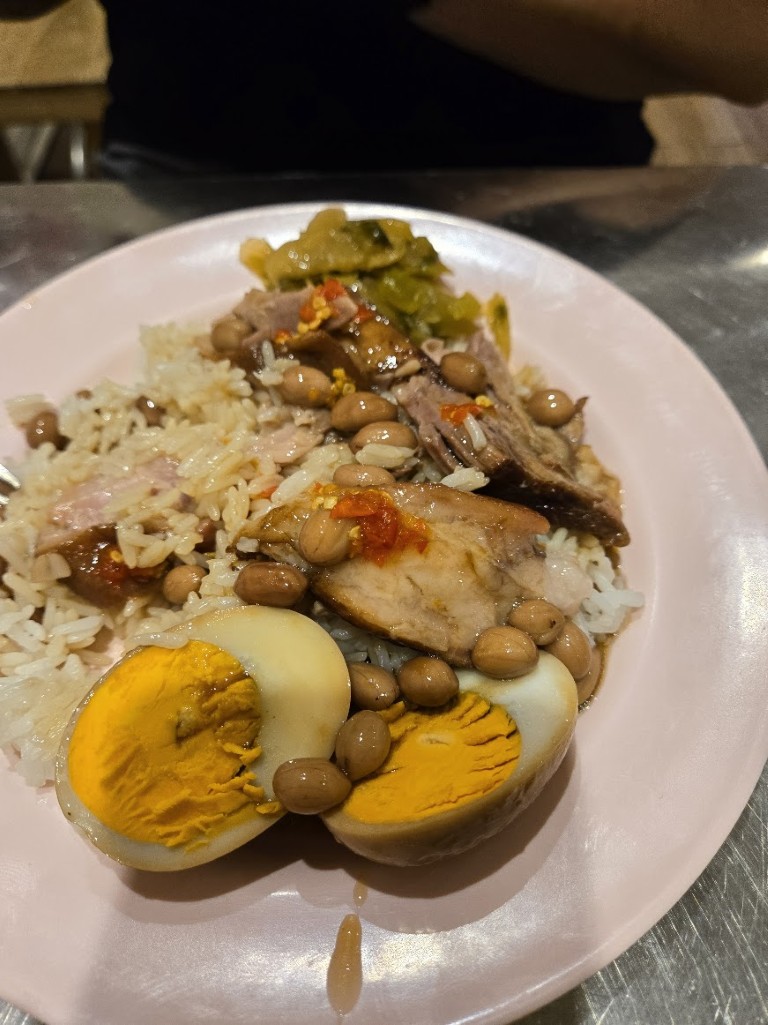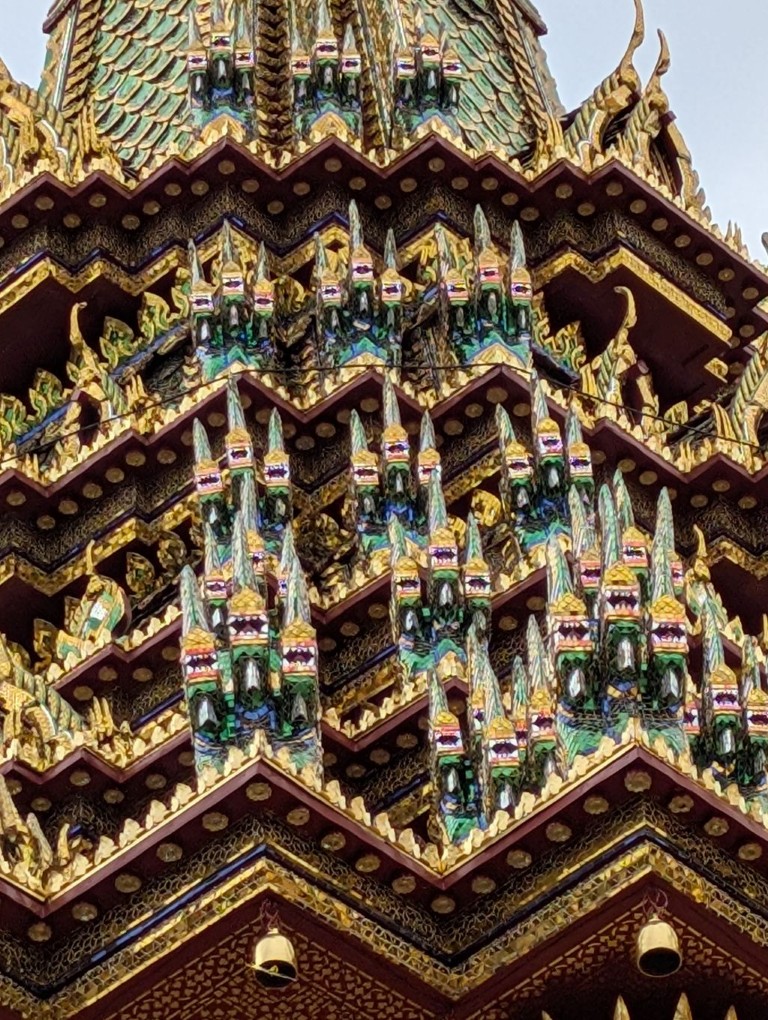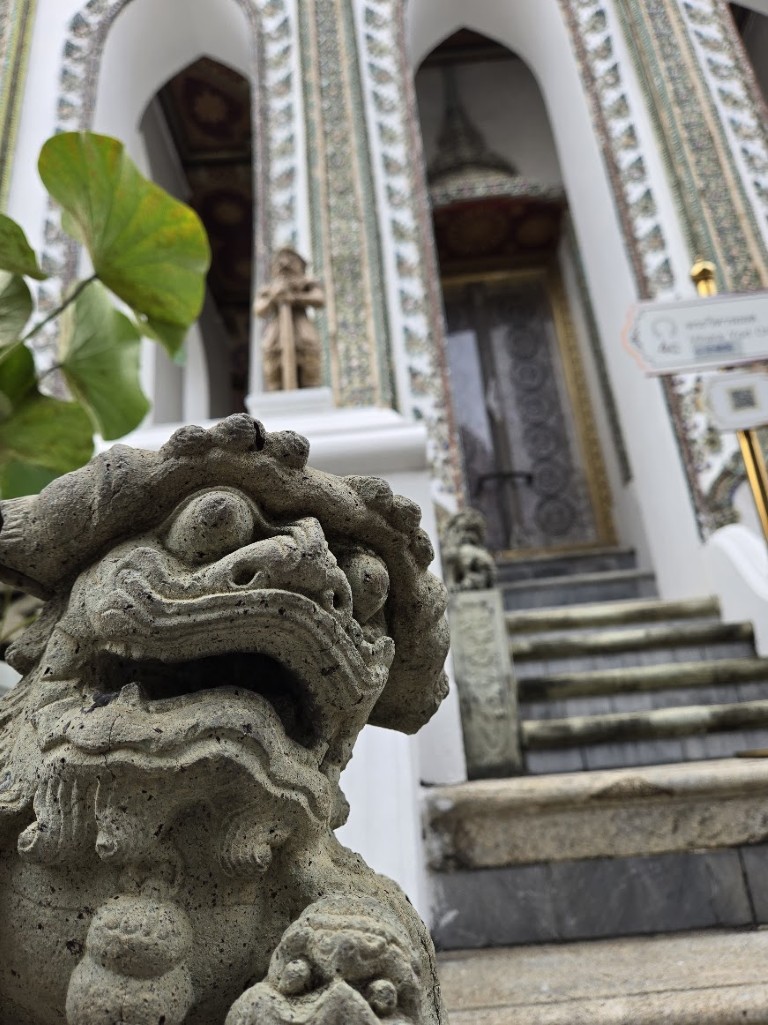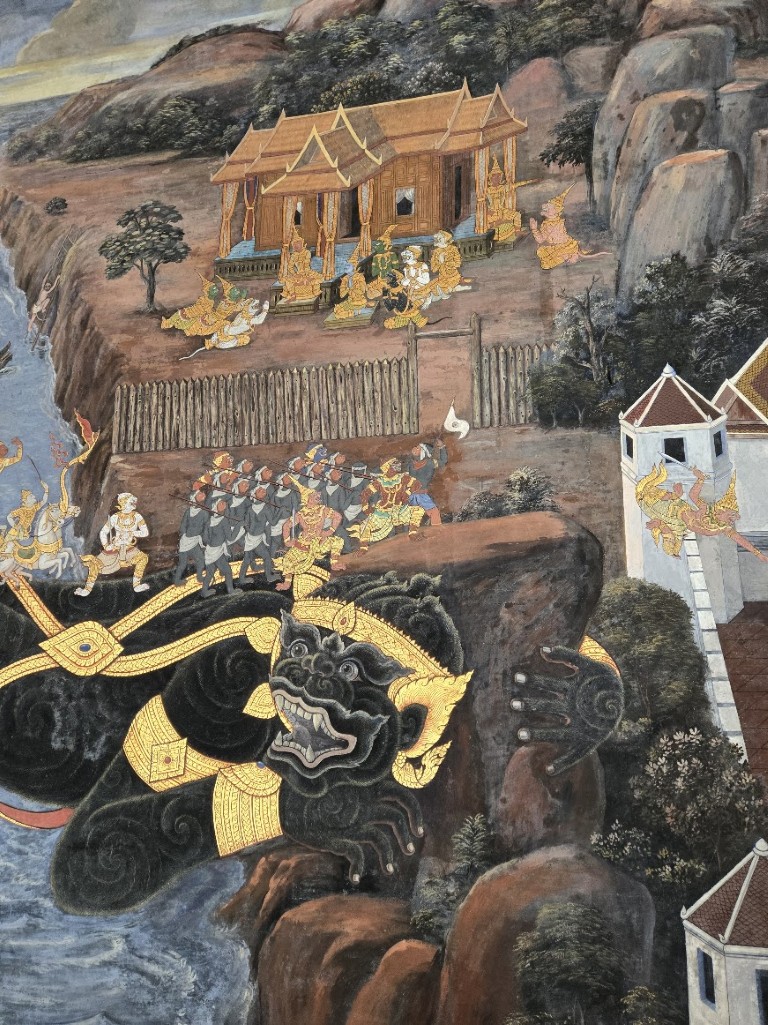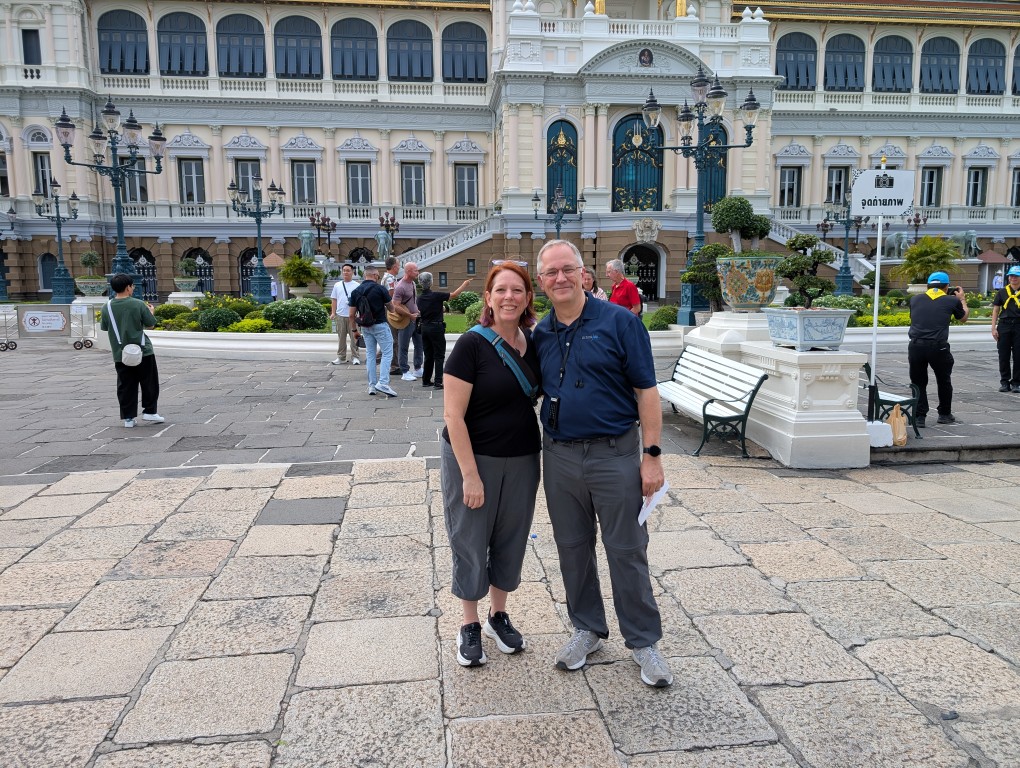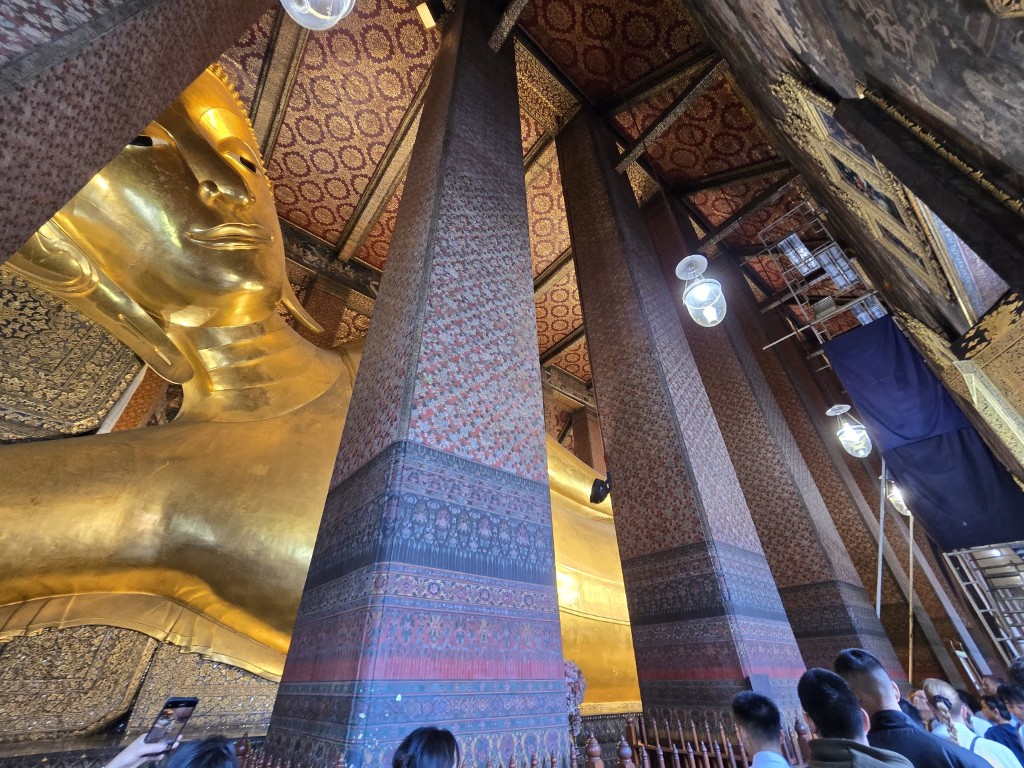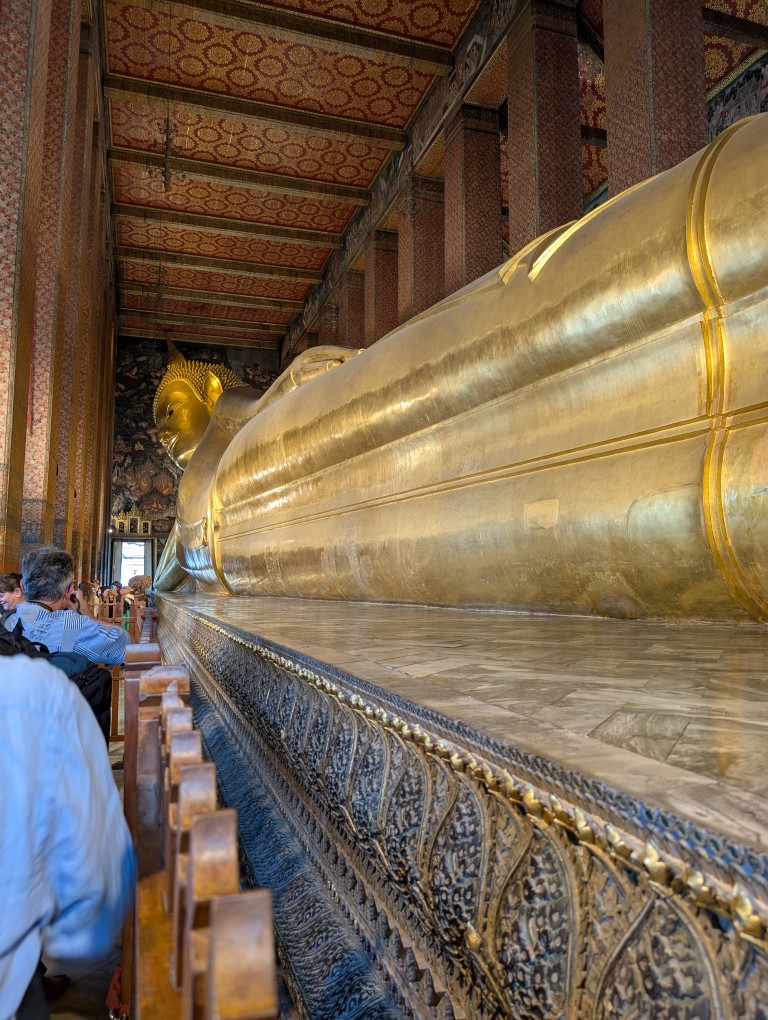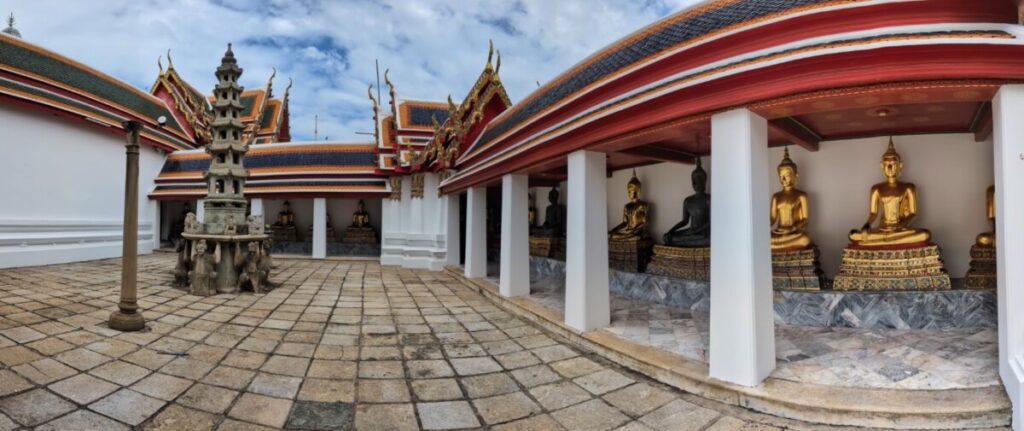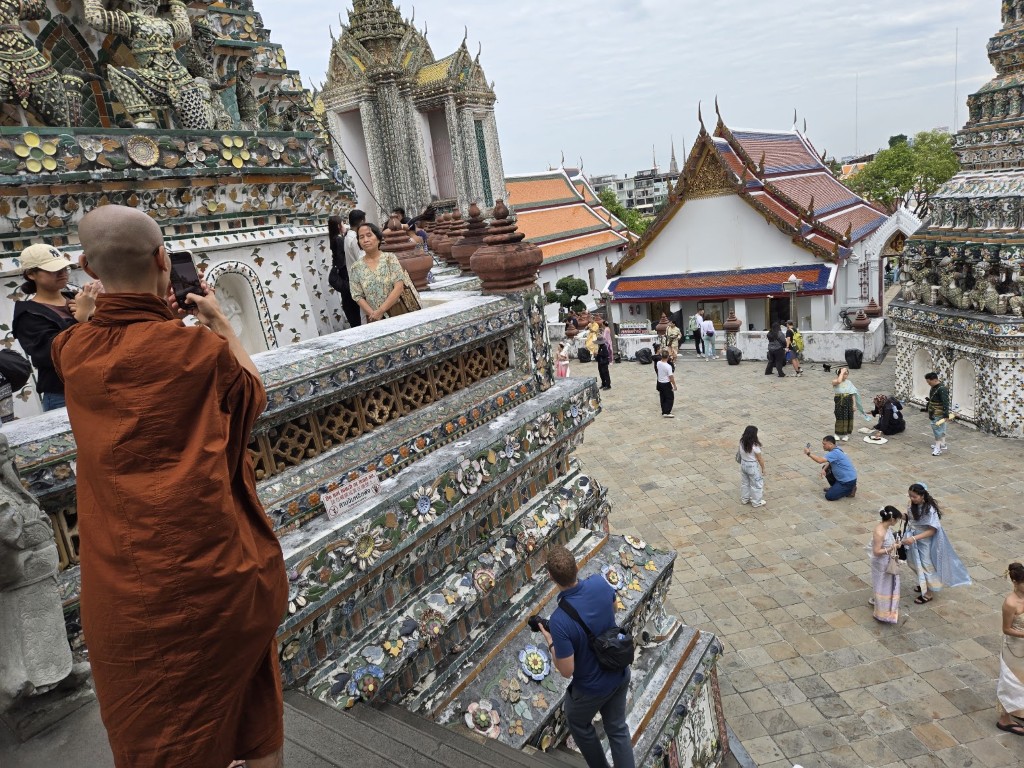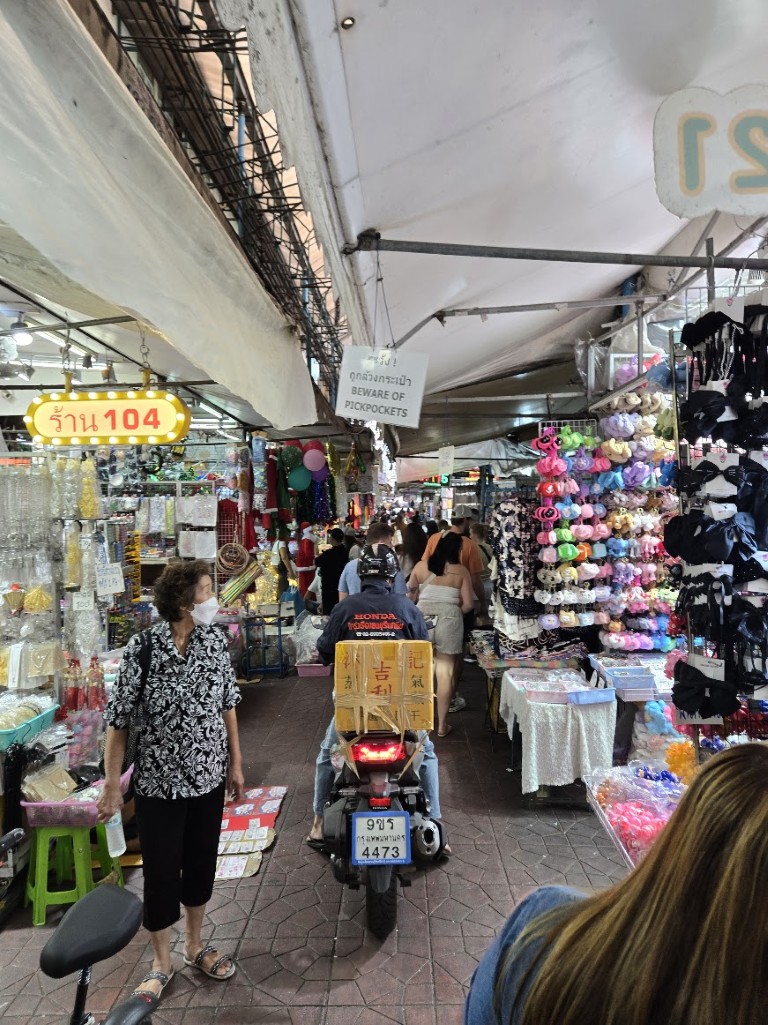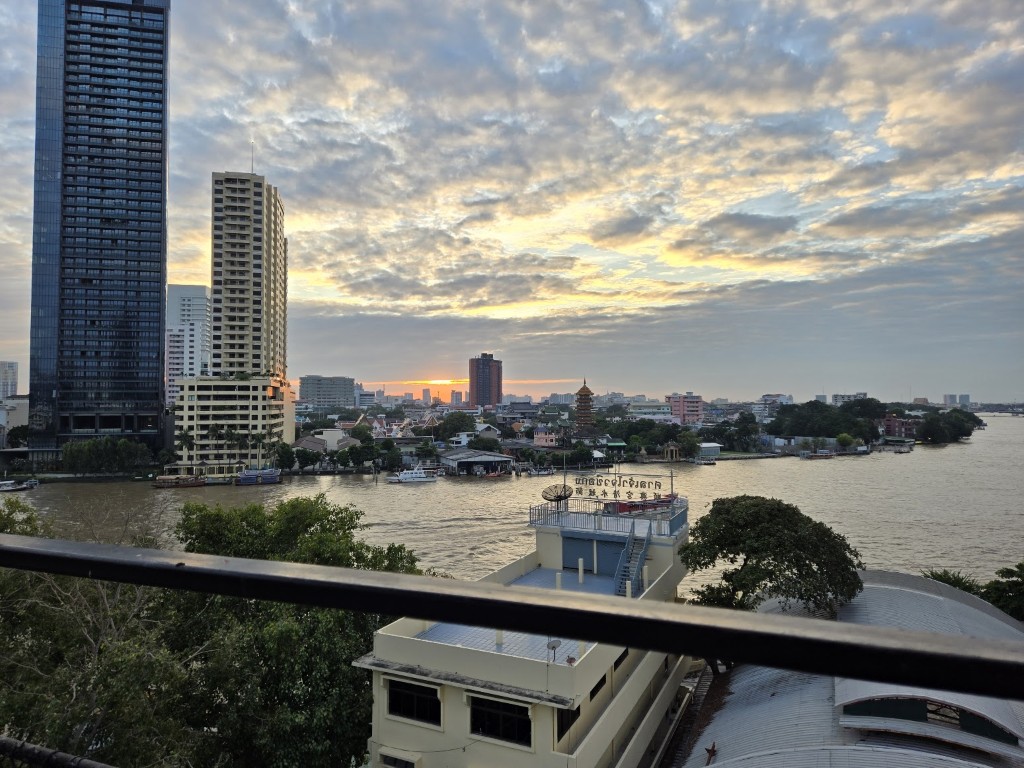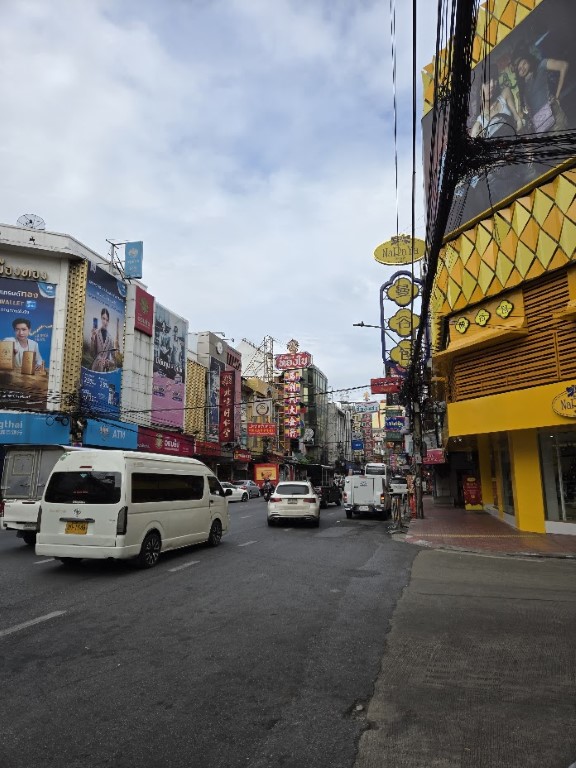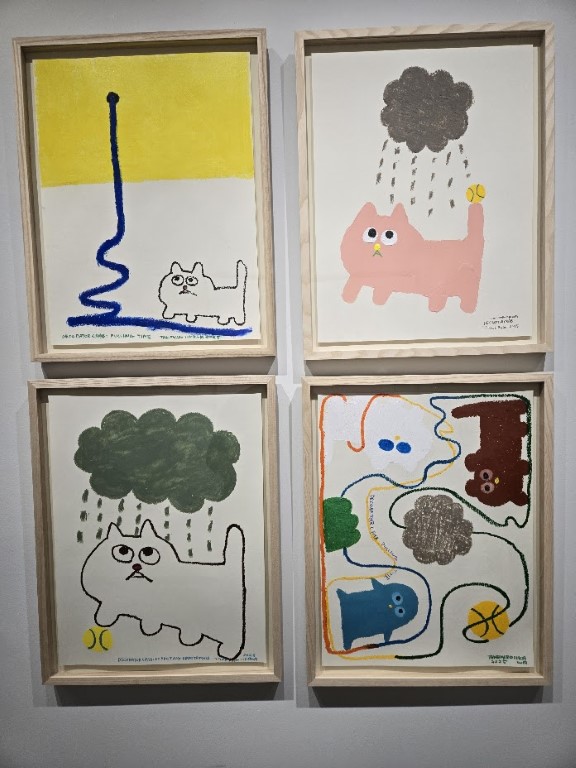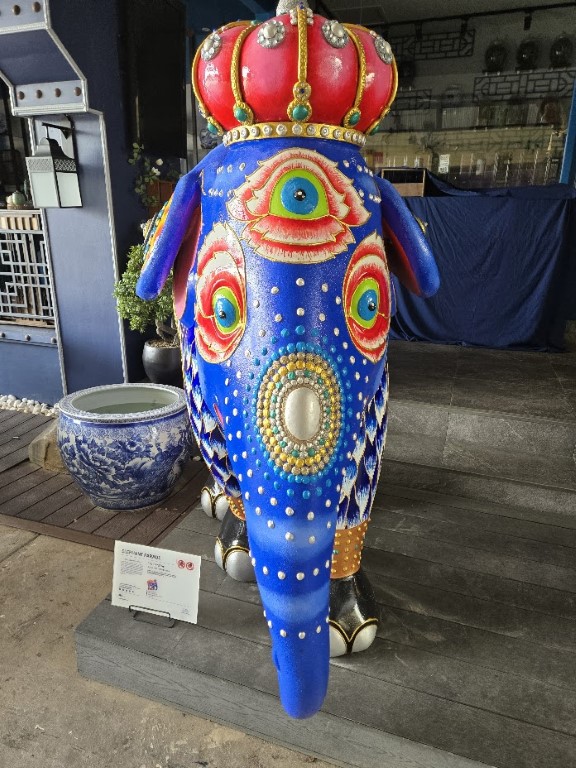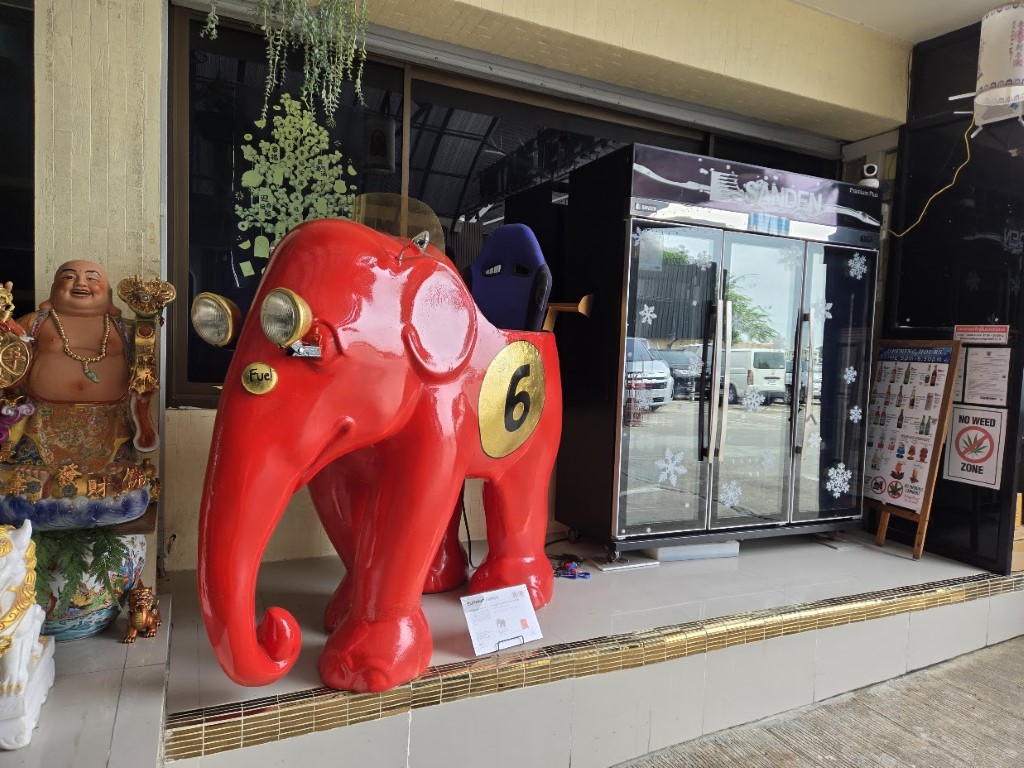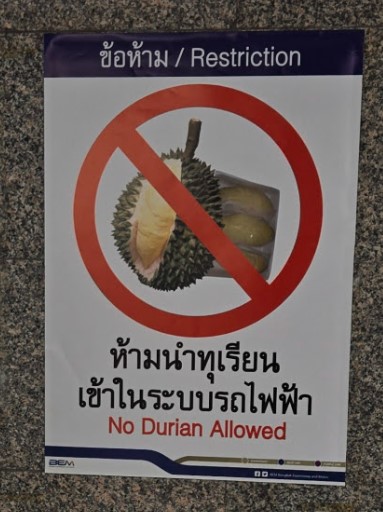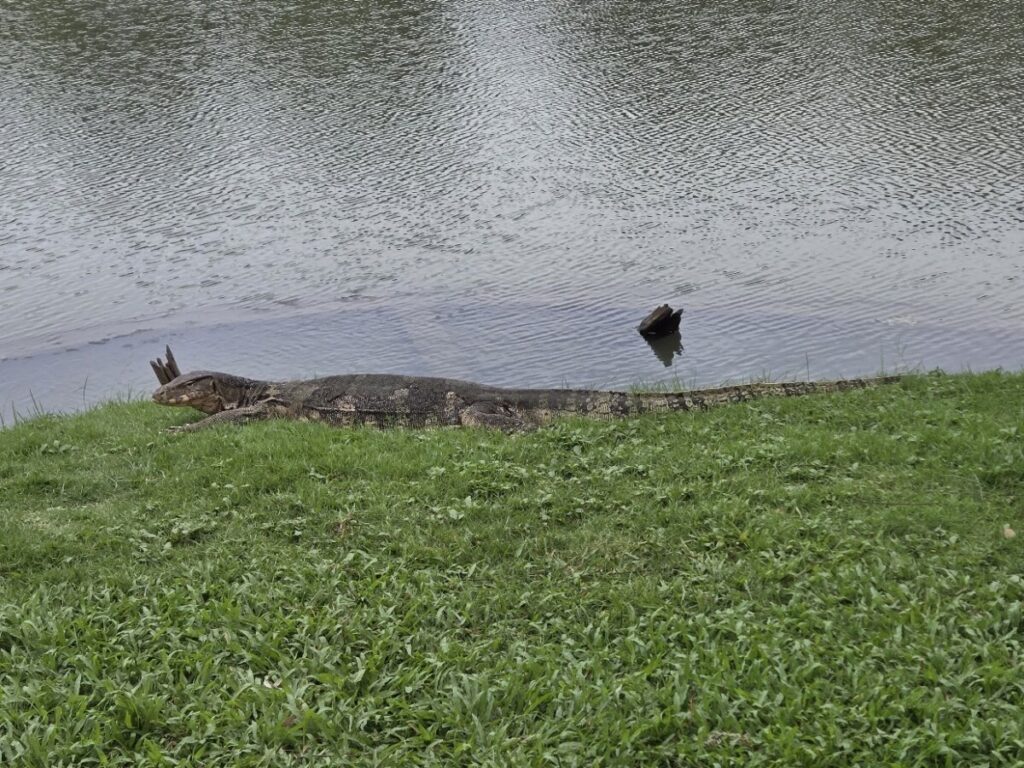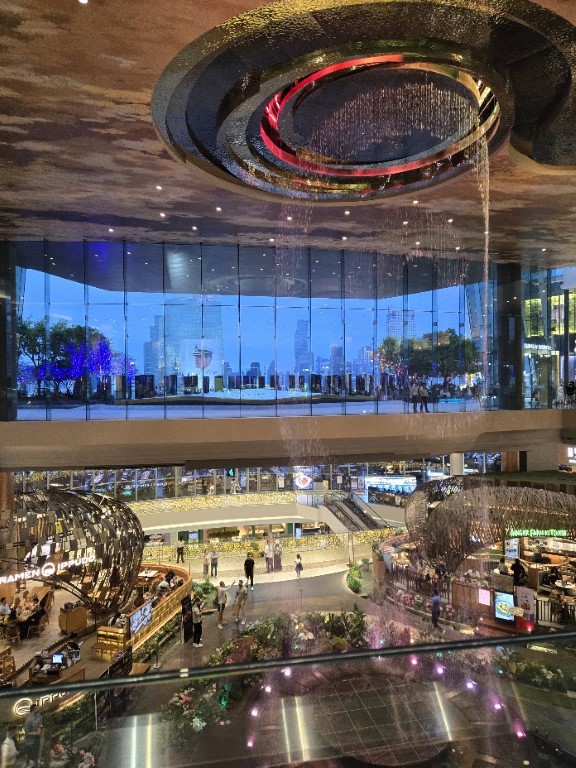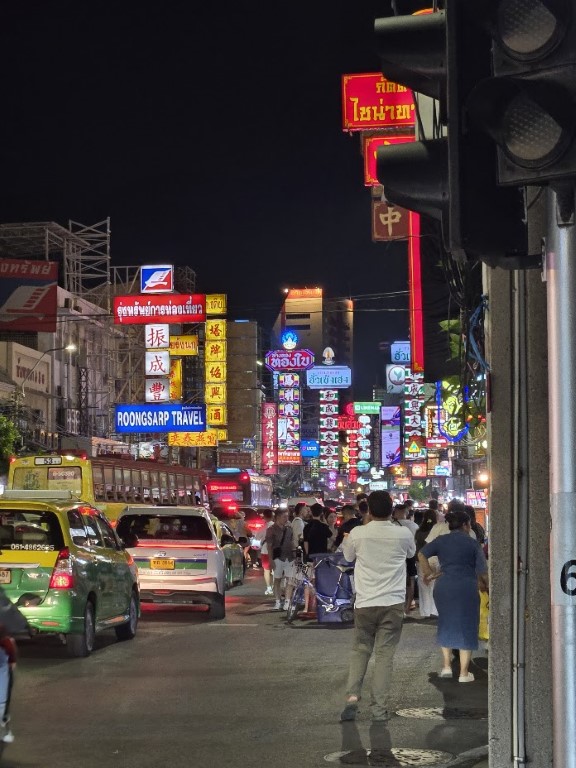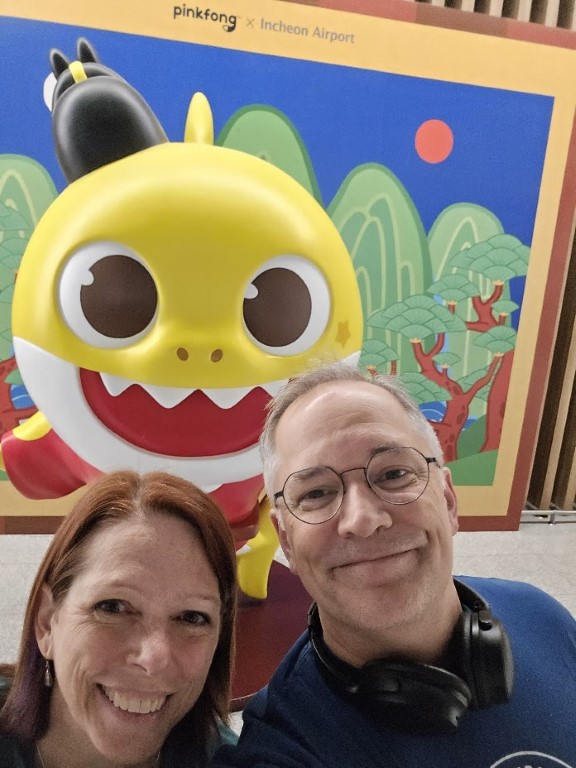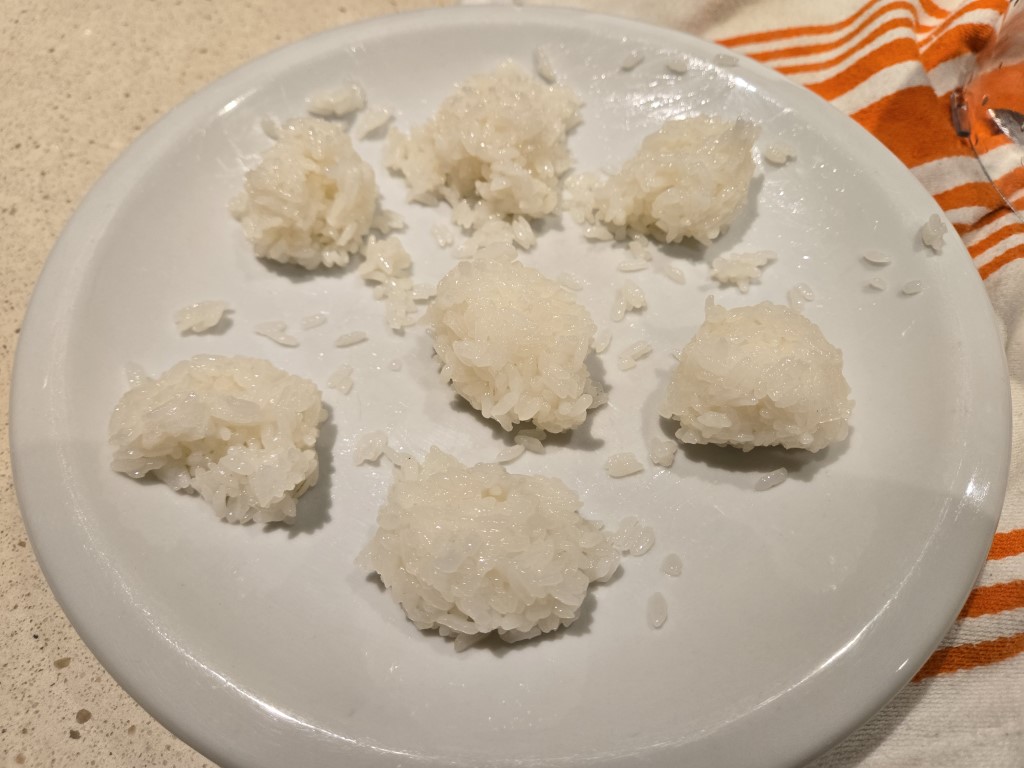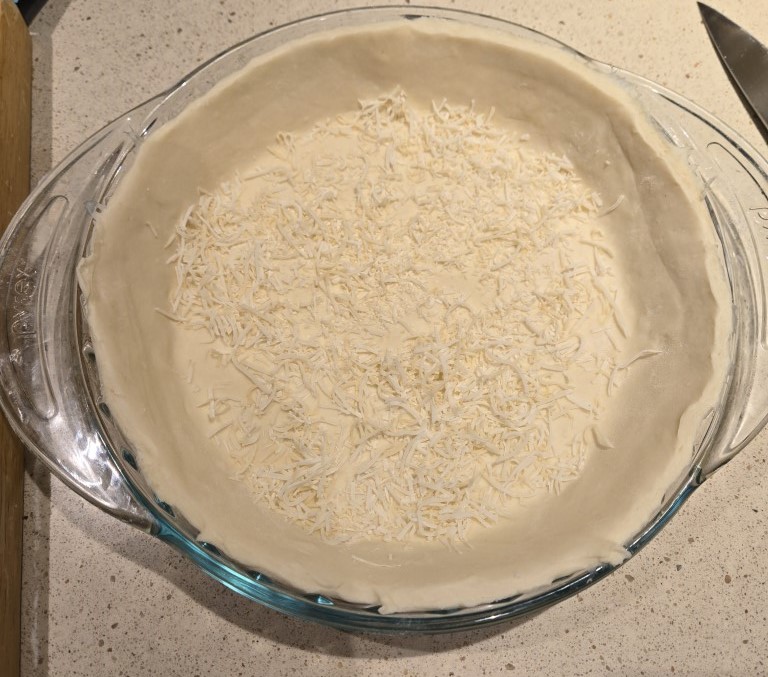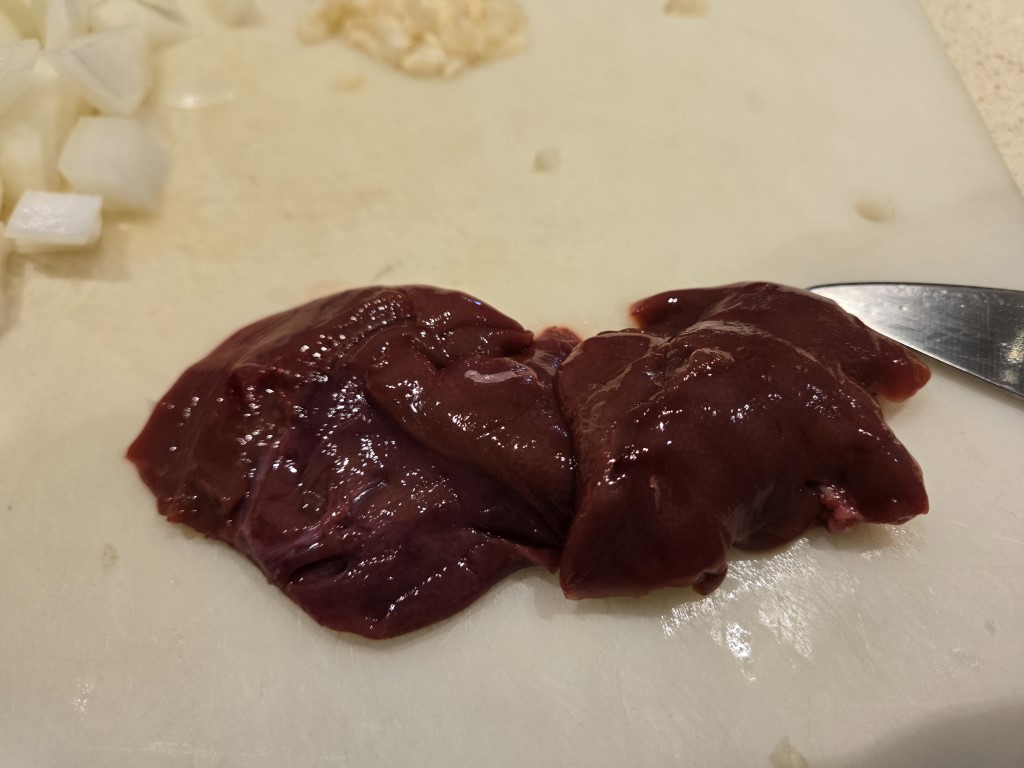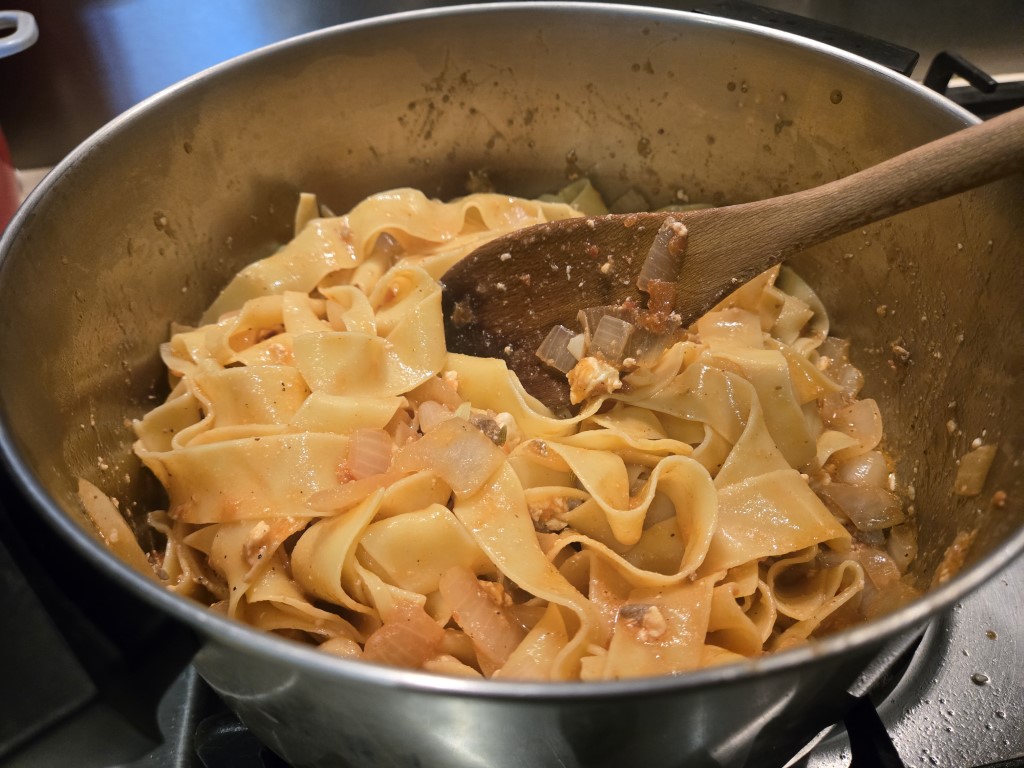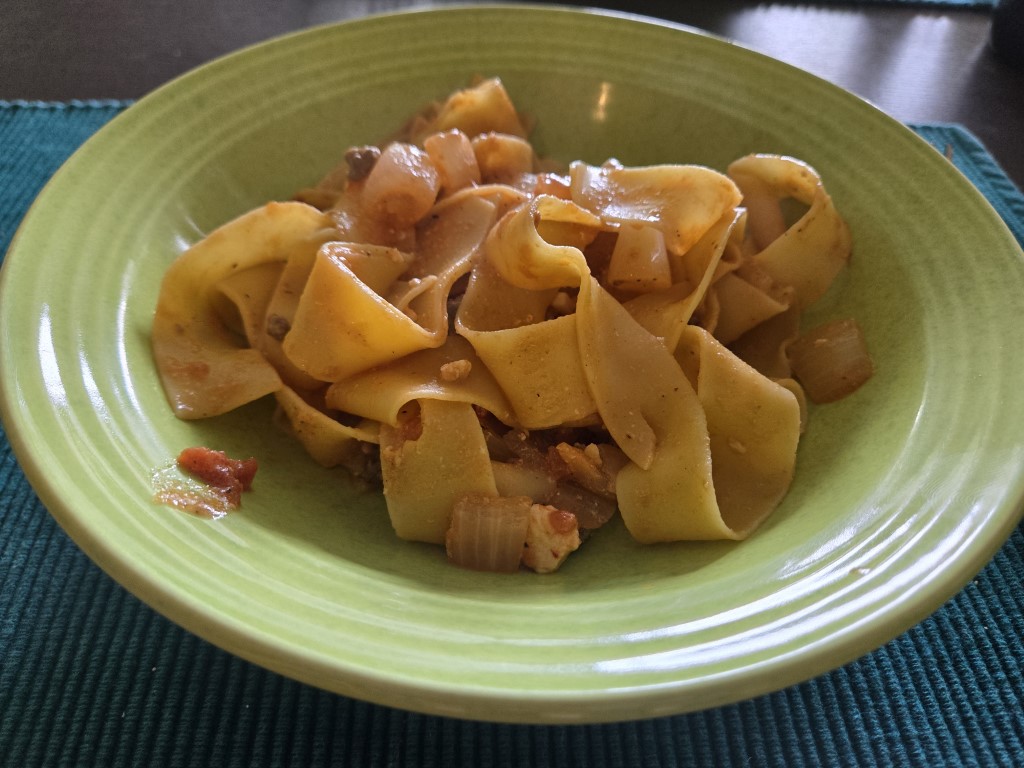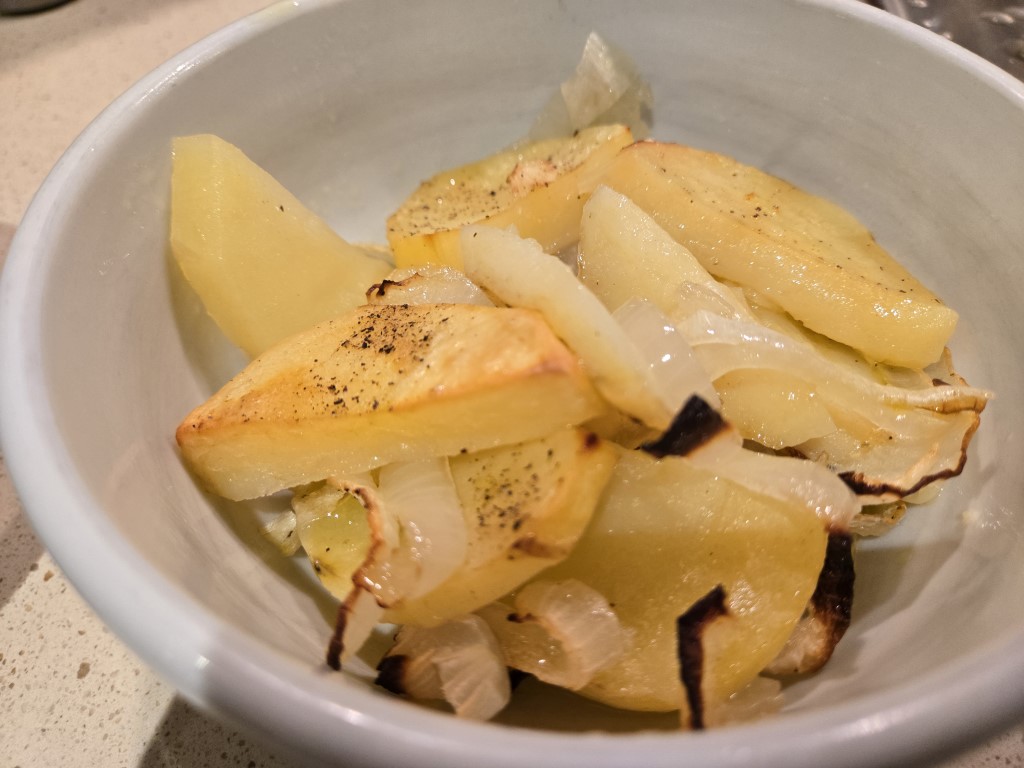One of the reasons you come to the south of Thailand is to experience the islands. There are a wide range of possibilities, from party havens covered in a three deep carpet of Instagrammers, to more peaceful islands with a higher proportion of locals.
We opted for one of the latter, or at least as peaceful as you could get within an hour’s boat ride of Phuket and Ao Nang. (More on Ao Nang itself later.)
After experiencing more or less continuous rain the previous day, we were not happy to discover that the downpour in Krabi was still ongoing.
However, after a twenty minute Grab ride, we arrived at our departure pier for the ferry to our island to discover that while gloomy, it was at least no longer pouring. And the beach by the ferry terminal was lovely.
The ferry terminal itself was absolutely bonkers.

Fortunately, they had “getting confused tourists onto the correct boat” down to a science. Everyone was herded quickly and efficiently to the correct boat operator, and from there onto the correct boat with their luggage. They also put stickers on everyone so the boat drivers would know where to throw us off.
And in our case that was Koh Yao Noi, which means “Little Long Island.” (You’ll never guess what the nearby Koh Yao Yai means.) We had read that it was a quieter island perfect for folks like us who want to experience southern Thailand, with its different food culture and lifestyle, but don’t have time to get truly remote.
This still felt pretty remote. We were picked up by our first songthaew of the trip, but definitely not the last. A songthaew is a pickup truck which, by virtue of covering the bed and putting in seats, has been converted to a taxi.
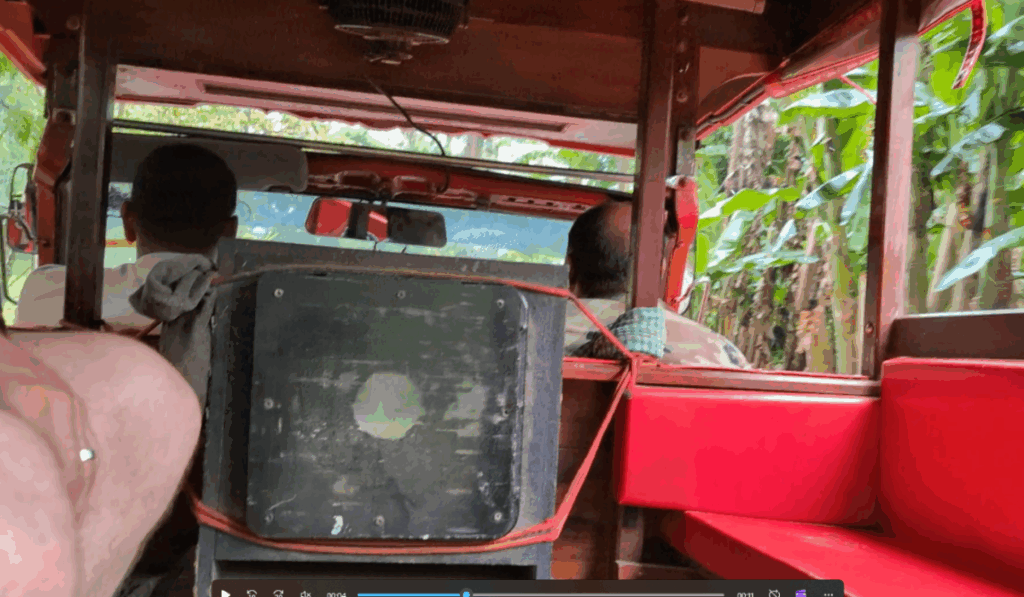
Not super common in Bangkok that we observed, they were everywhere in the South and around Chiang Mai.
Our hotel was a nice quiet assortment of huts around a central pond, not too far from the port.
This was our room:
And here are some cuddly friends we made around the grounds:
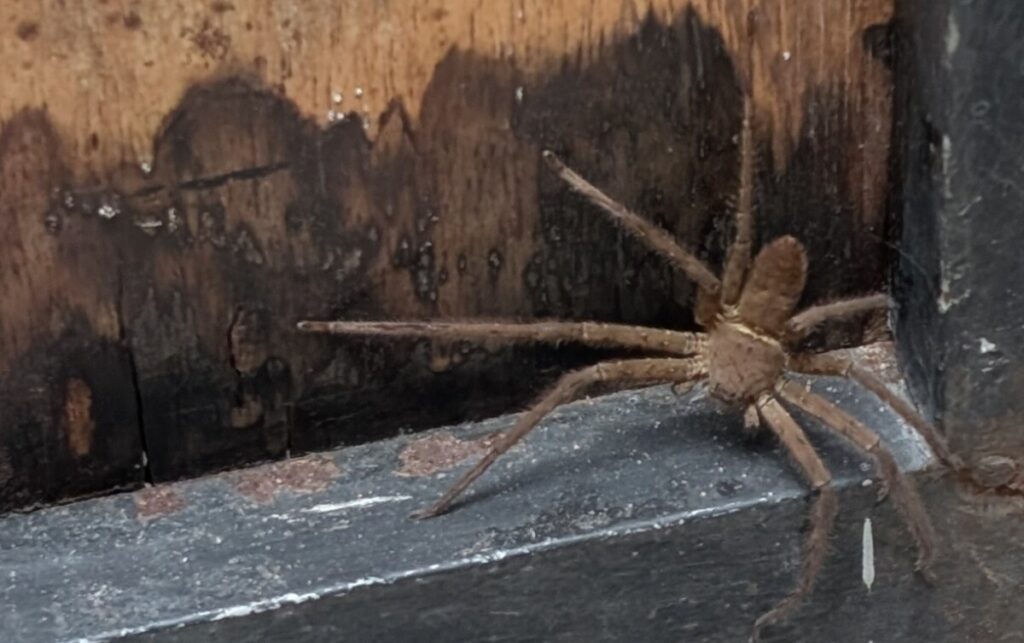
To be fair, that second pile of NOPE was not in our room, which was entirely cuddly friend free for the duration of our stay. (The monitor lizard was ALSO not in our room, but that probably goes without saying.)
Now settled, we set out for a walk to explore the island and find some lunch. Definitely a quiet, rural vibe.
…aaand then it started pouring rain again. We took refuge on the terrace of a local restaurant, and set out to discover if southern Thai food would wow us as much as what we had in Bangkok.
We needn’t have worried.
That would be stir fried squid in black sauce made with squid ink, and crabs in lime sauce. Absolutely heavenly, and being able to watch the rain on the water while we ate was much better than slogging around in it.
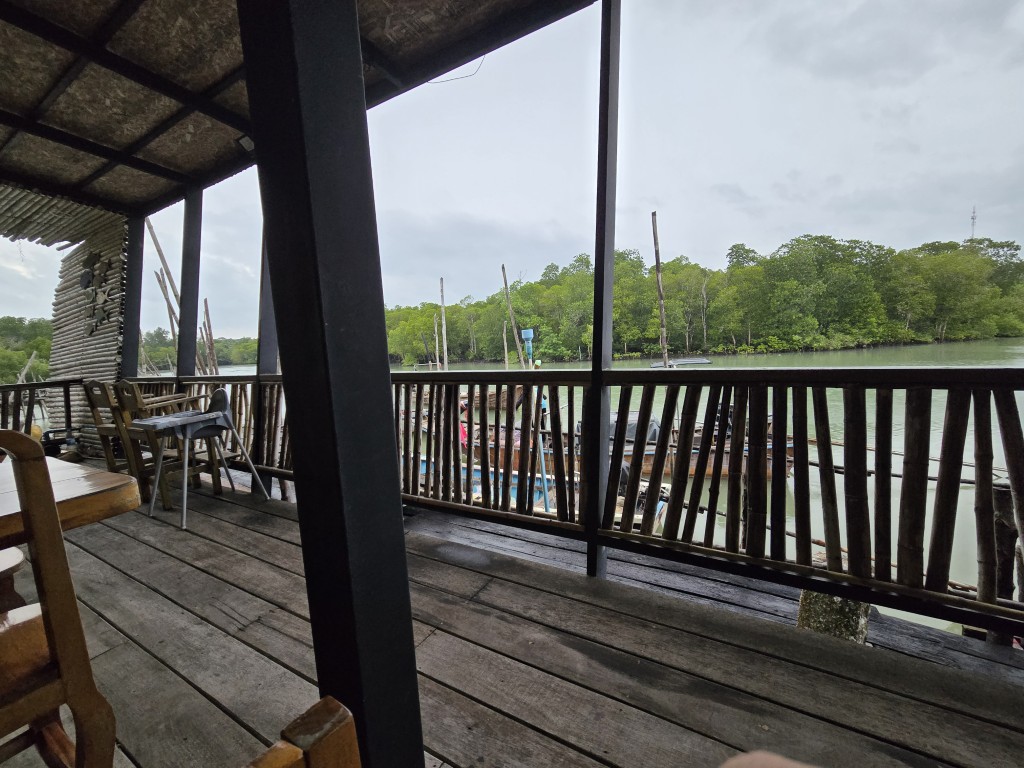
Given that, we asked the restaurant to call us another songthaew, and we went back to our room, where we spent the next five hours or so cursing the rain and wishing the hotel wifi hadn’t gone out, so we’d have at least had THAT going for us.
Still – the fact that this remote island in Phang Nga bay normally has internet is obviously a different story than travelling when we were younger would have told, so not TOO much to complain about.
Dinner time rolled around, and we had the hotel call us our third songthaew of the day so we could go visit another local restaurant.
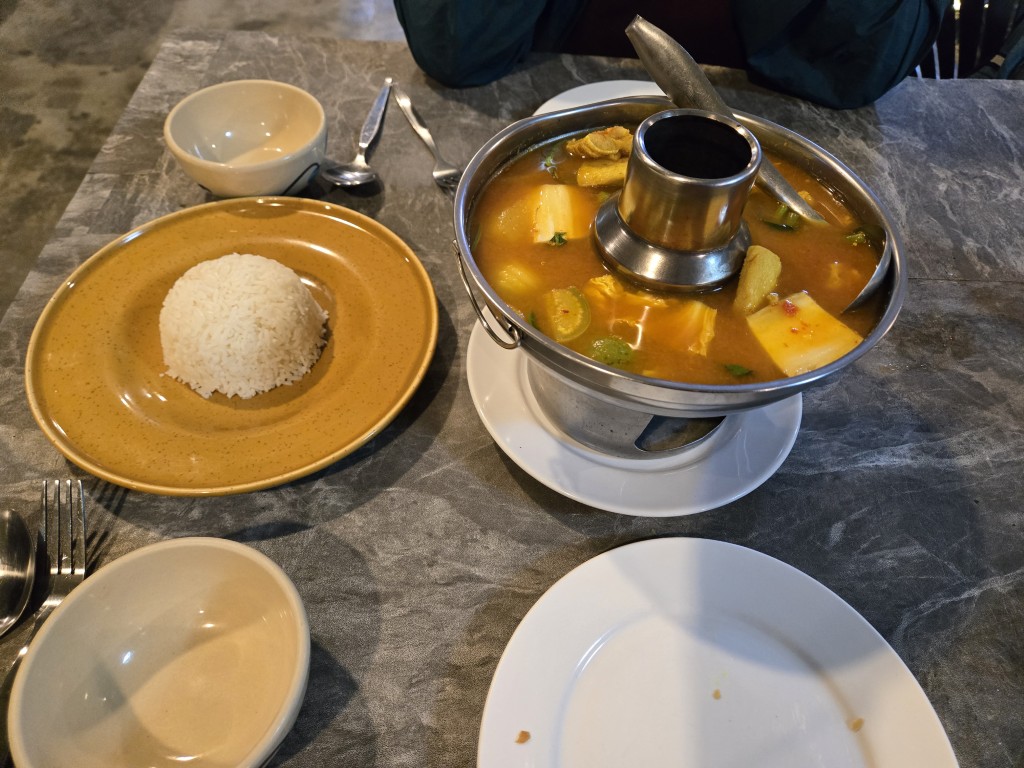
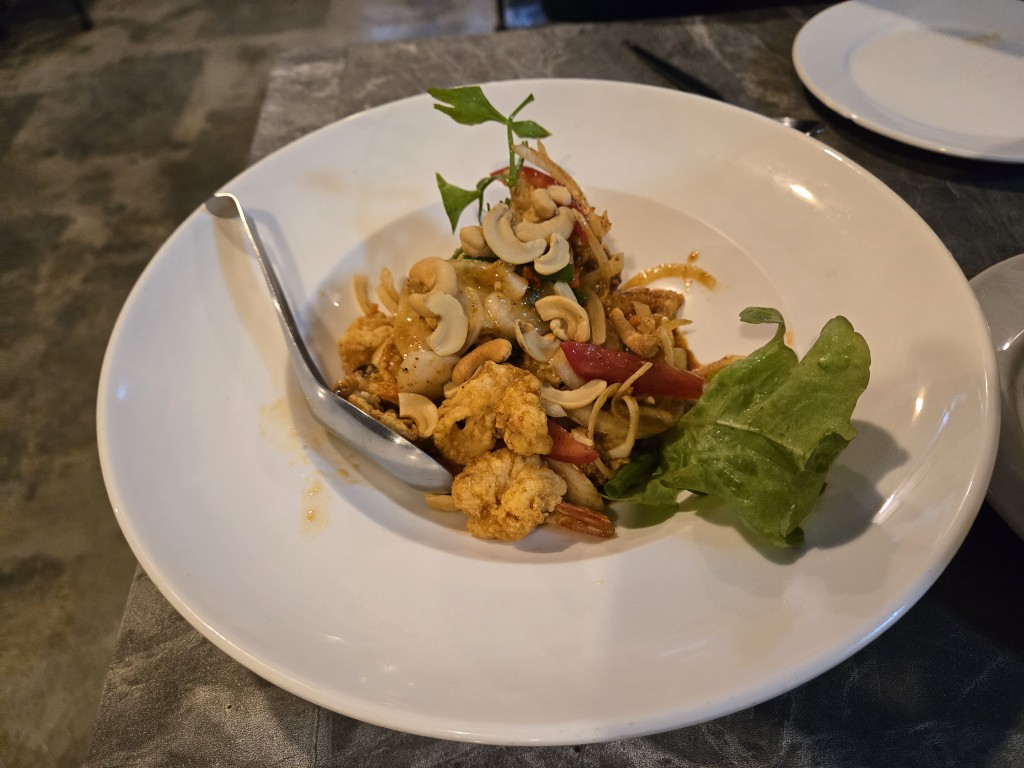
Massaman fish curry, and spicy sour deep fried seafood over noodles. What’s not to love?
One truly entertaining thing did happen during this meal. The restaurant was, like basically every restaurant on Koh Yao that we observed, an open air patio. We were relatively close to the road, but it was dark, so we were essentially in a little island of light, next to a dark road, with dark trees across the street.
At one point, the owner comes out of the kitchen and walks up to the hostess, to whom he hands a large knife and points out into the darkness. The hostess takes the knife, and sets out, walking across the road, out of our little oasis of cheer, and into the blackness out of sight.
With a knife.
We have no idea what this is about – is she going off to harvest a pineapple? Slaughter a chicken? Have a dance fight to the lilting guitar stylings of Eddie Van Halen?
A few minutes later she reappears with a banana leaf.
Welp, mystery solved. We finished eating and took a taxi back to our hotel to begin praying for better weather on the morrow.

